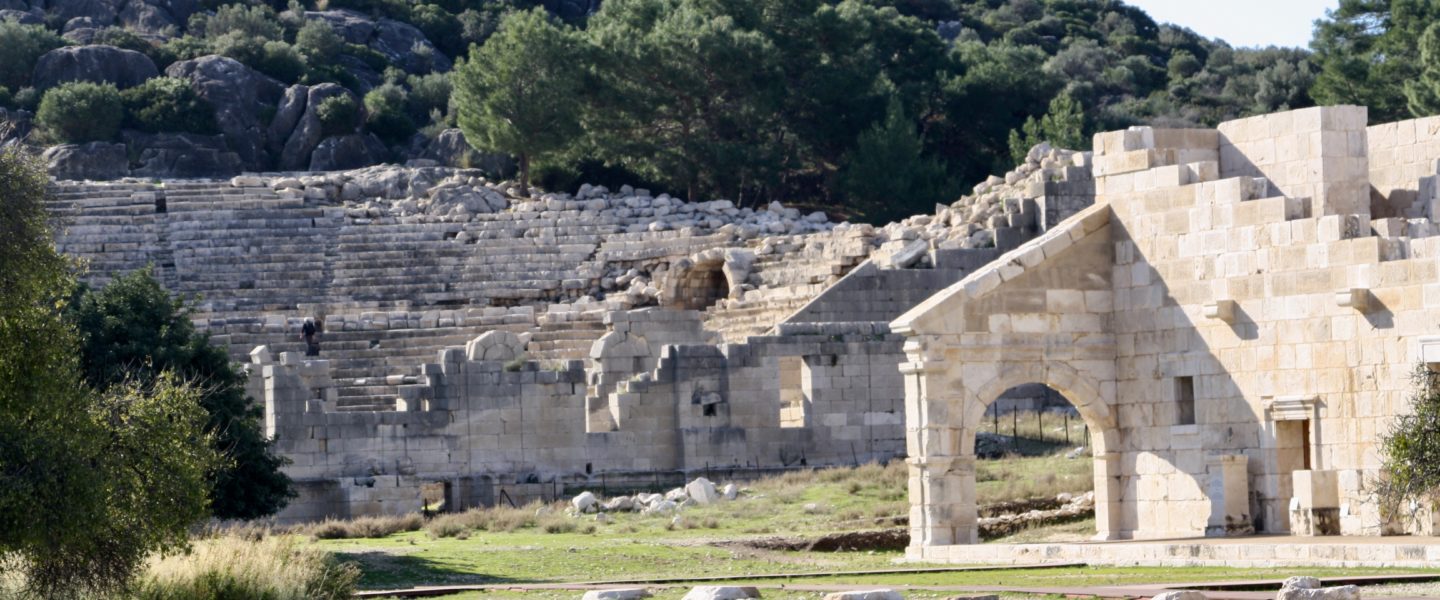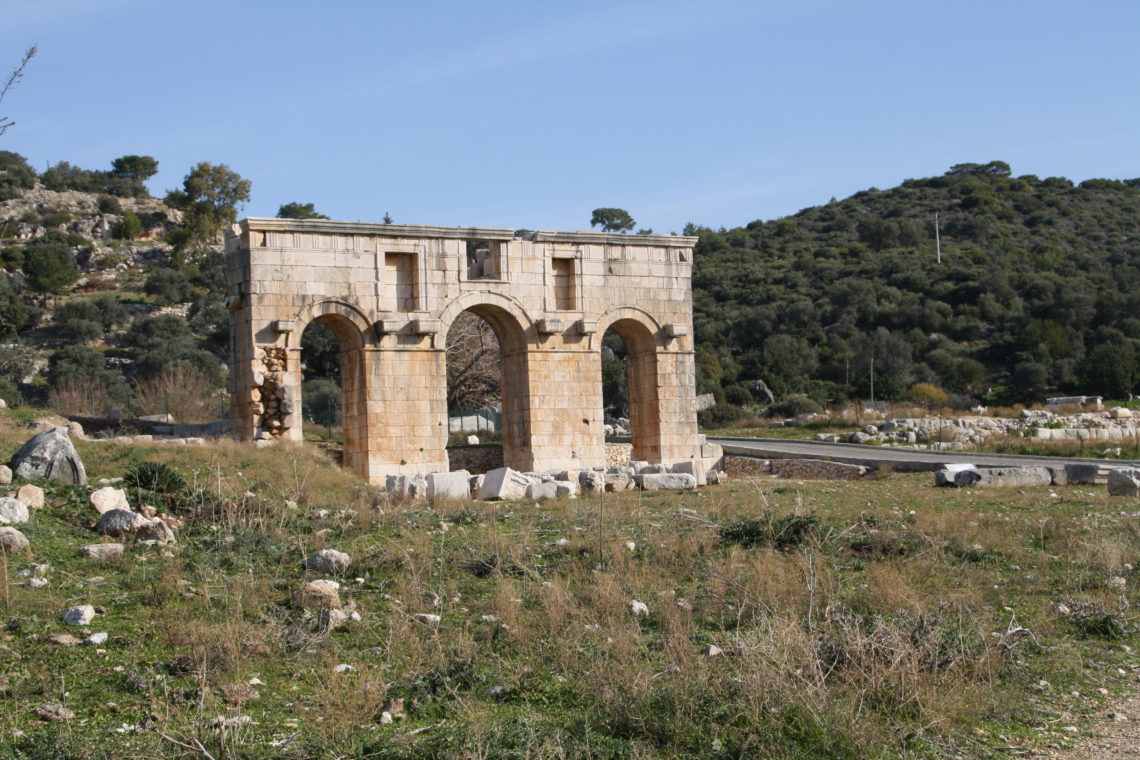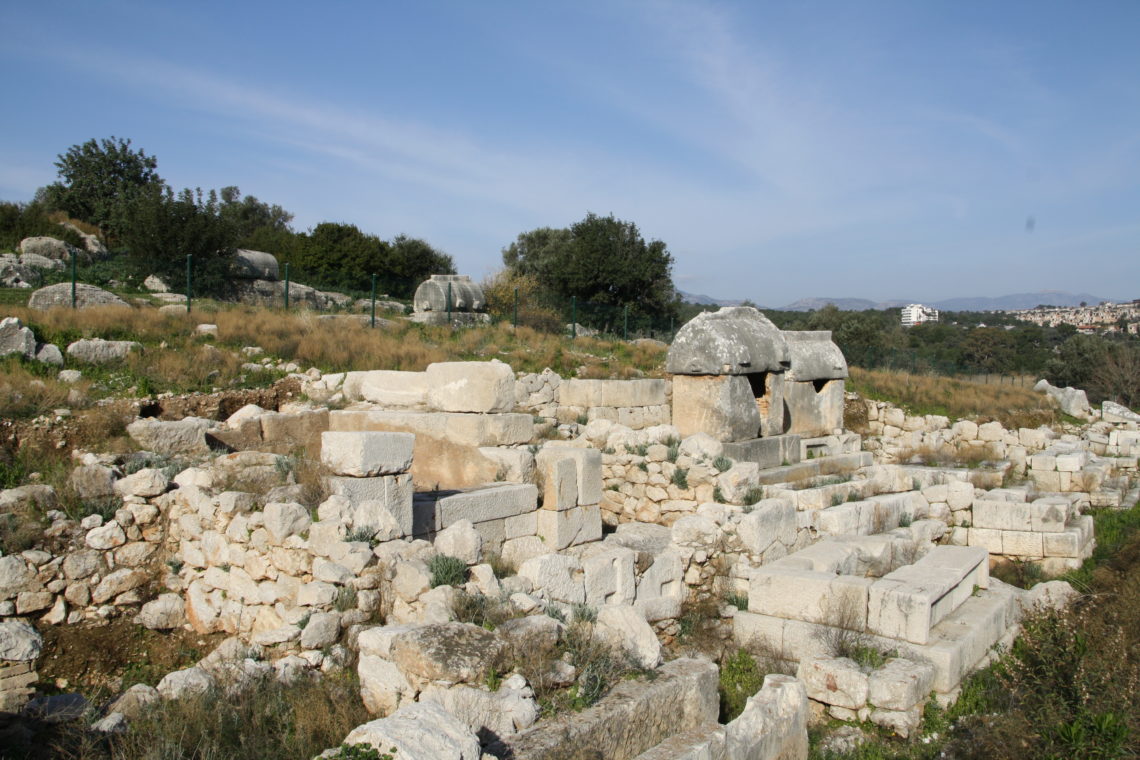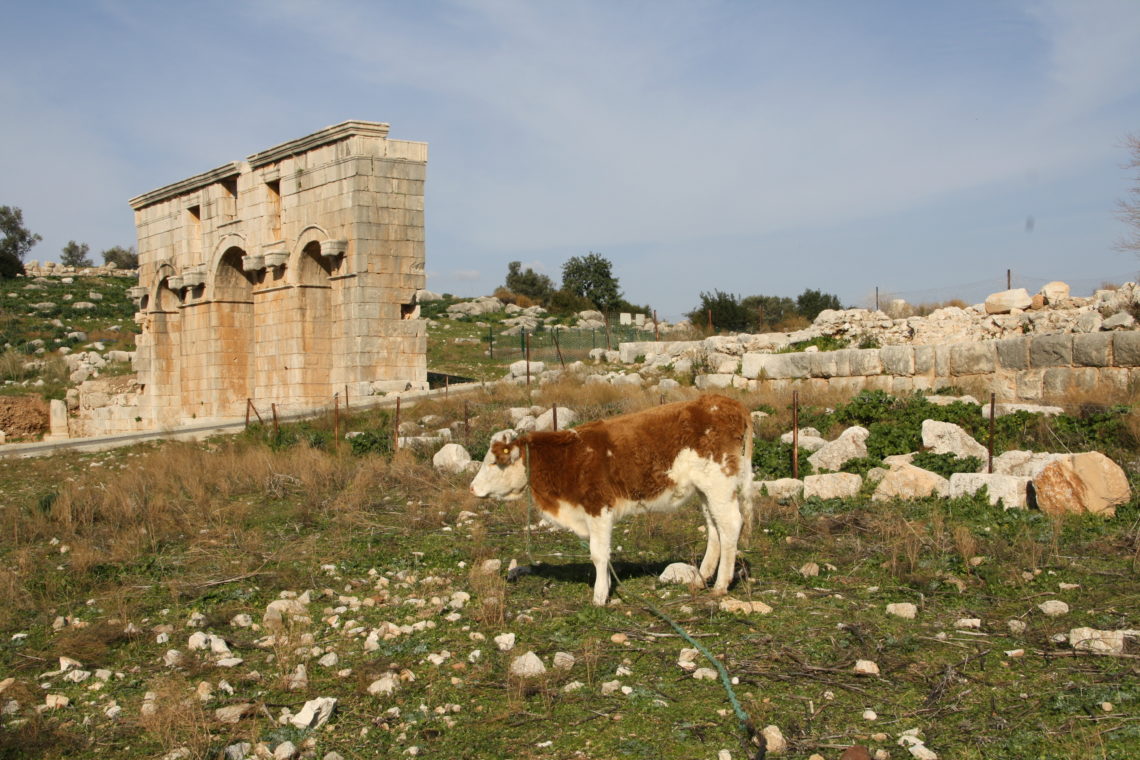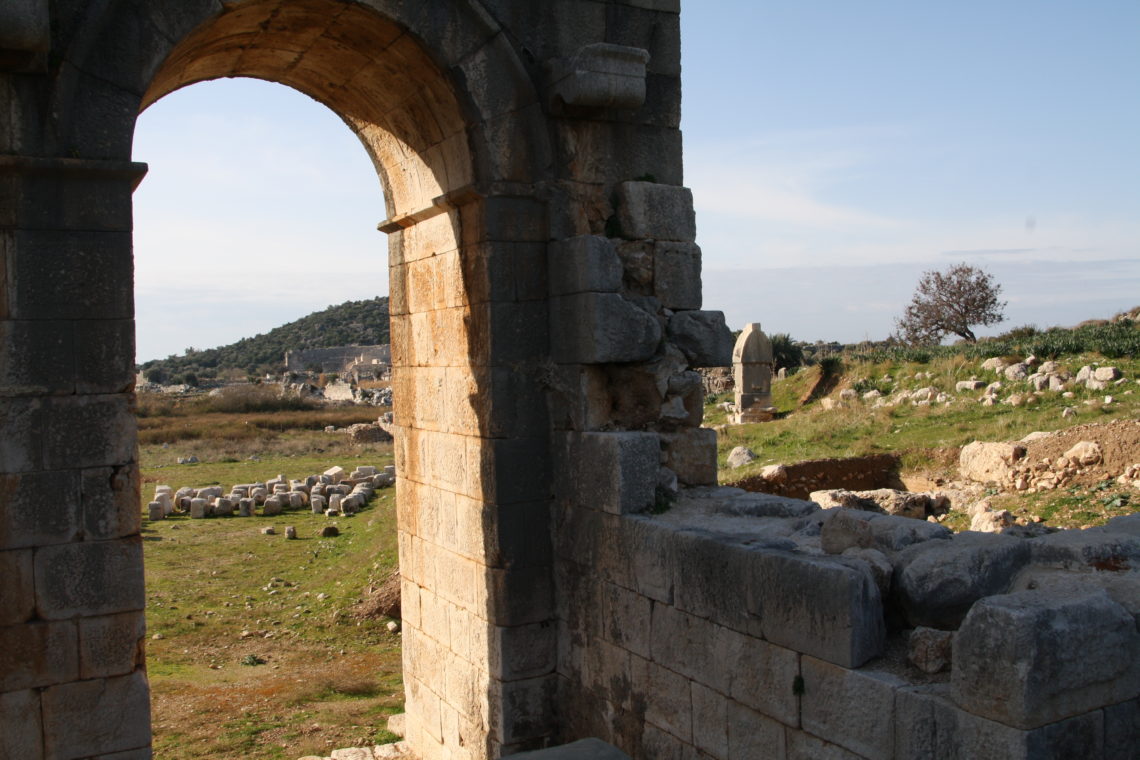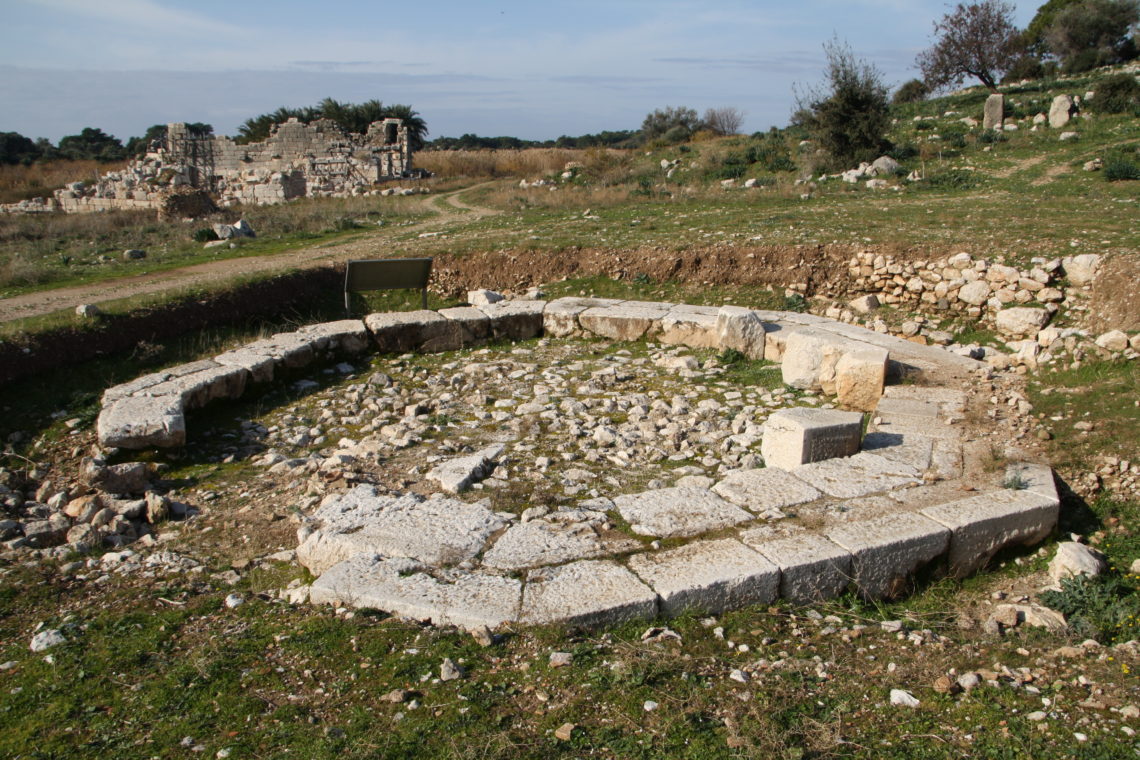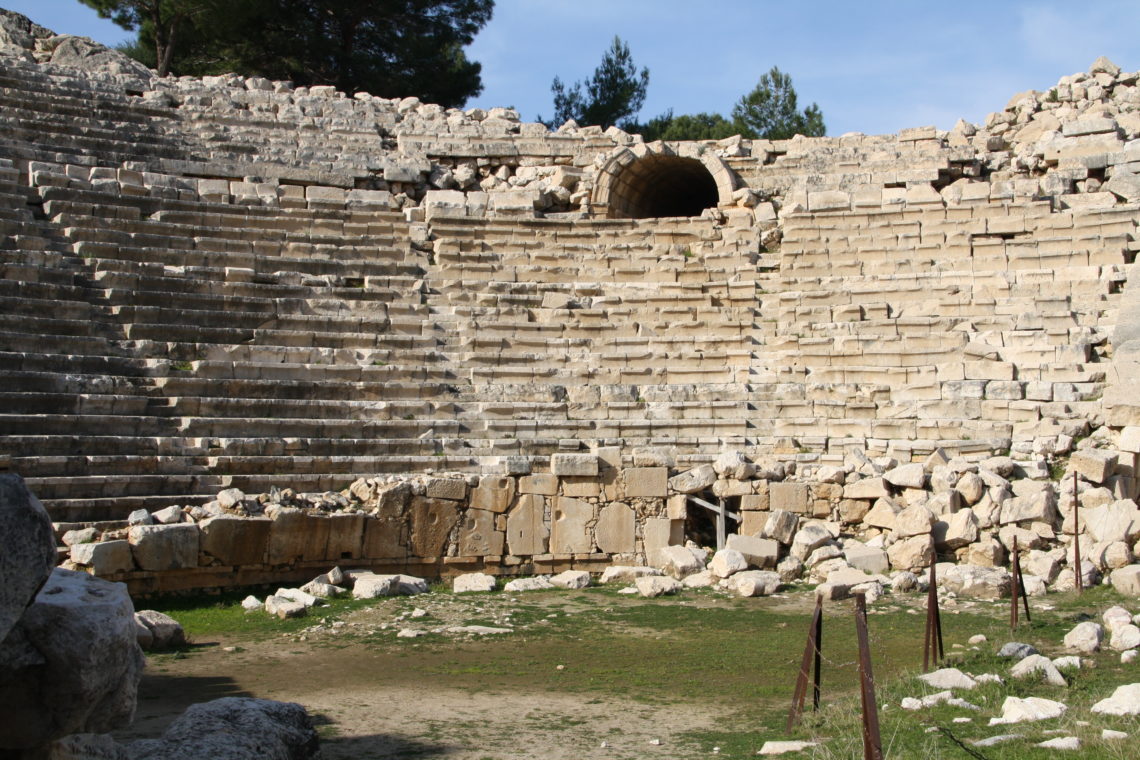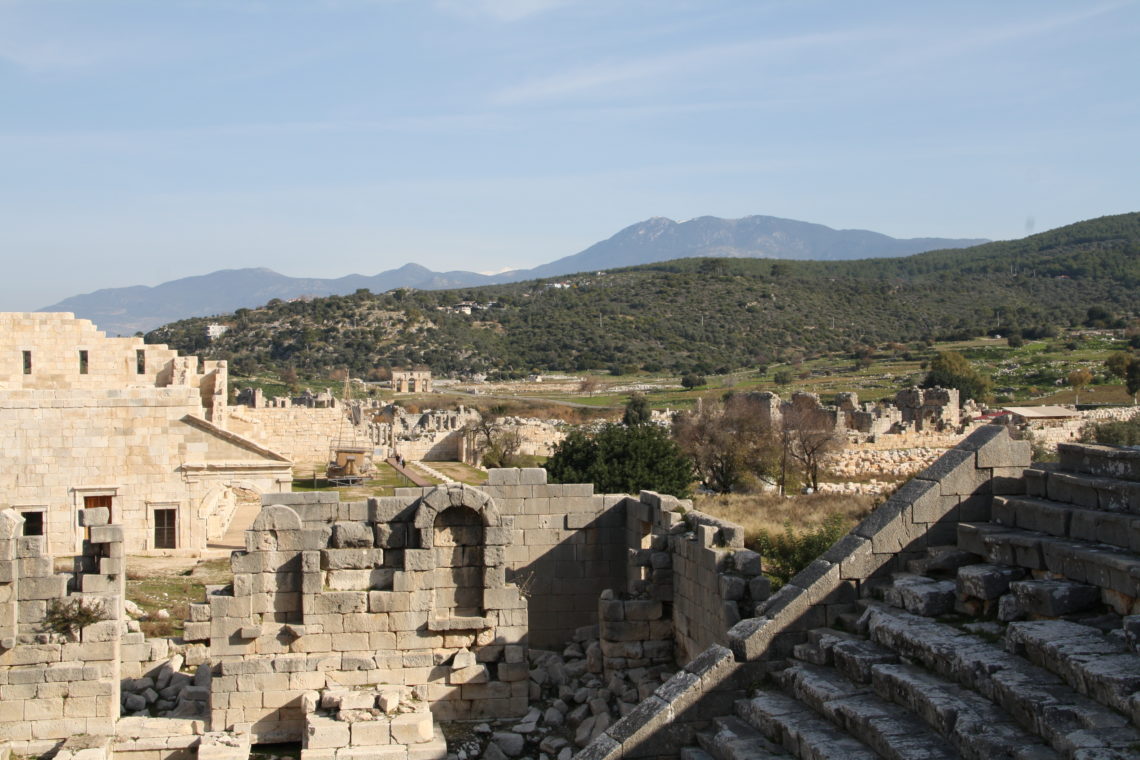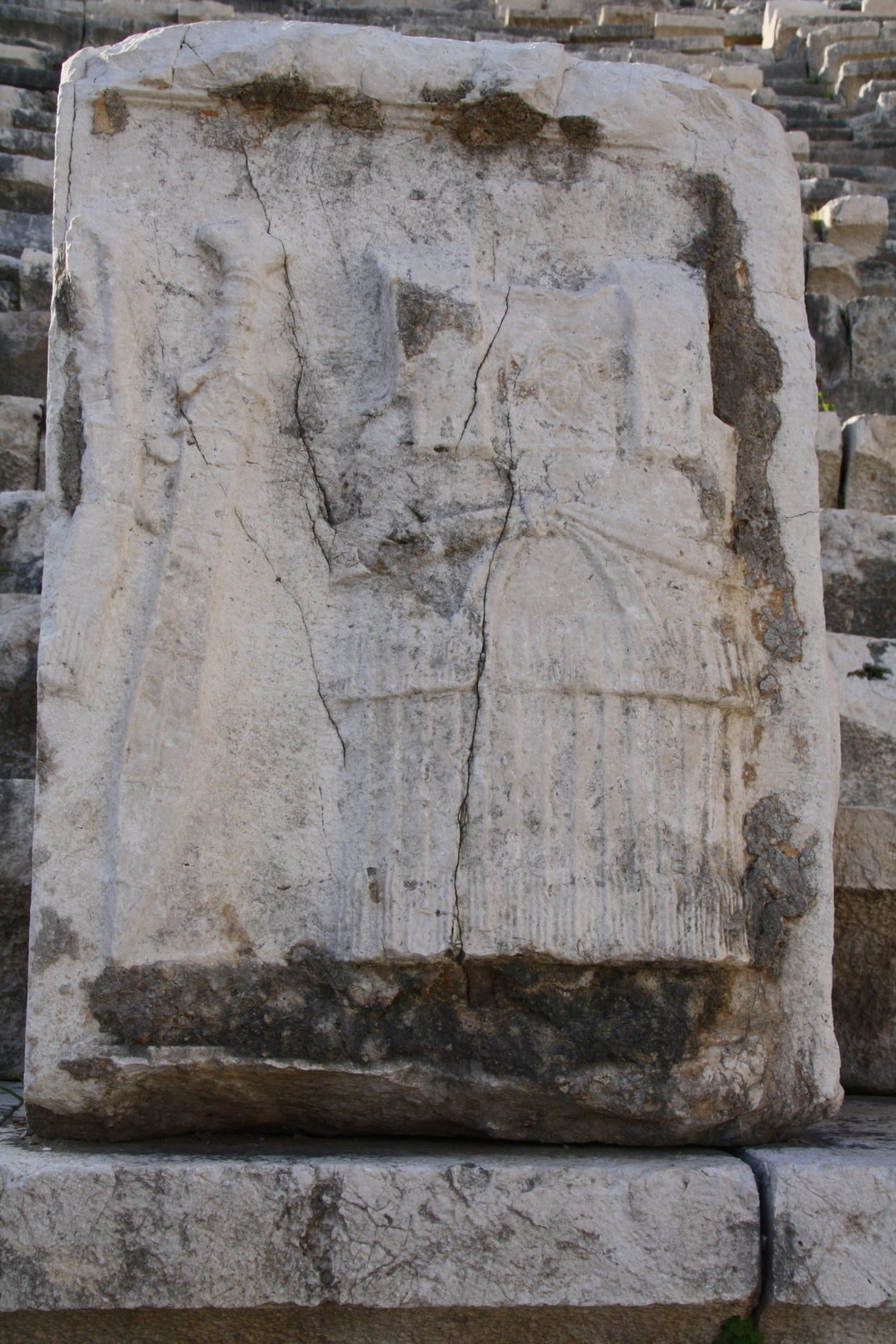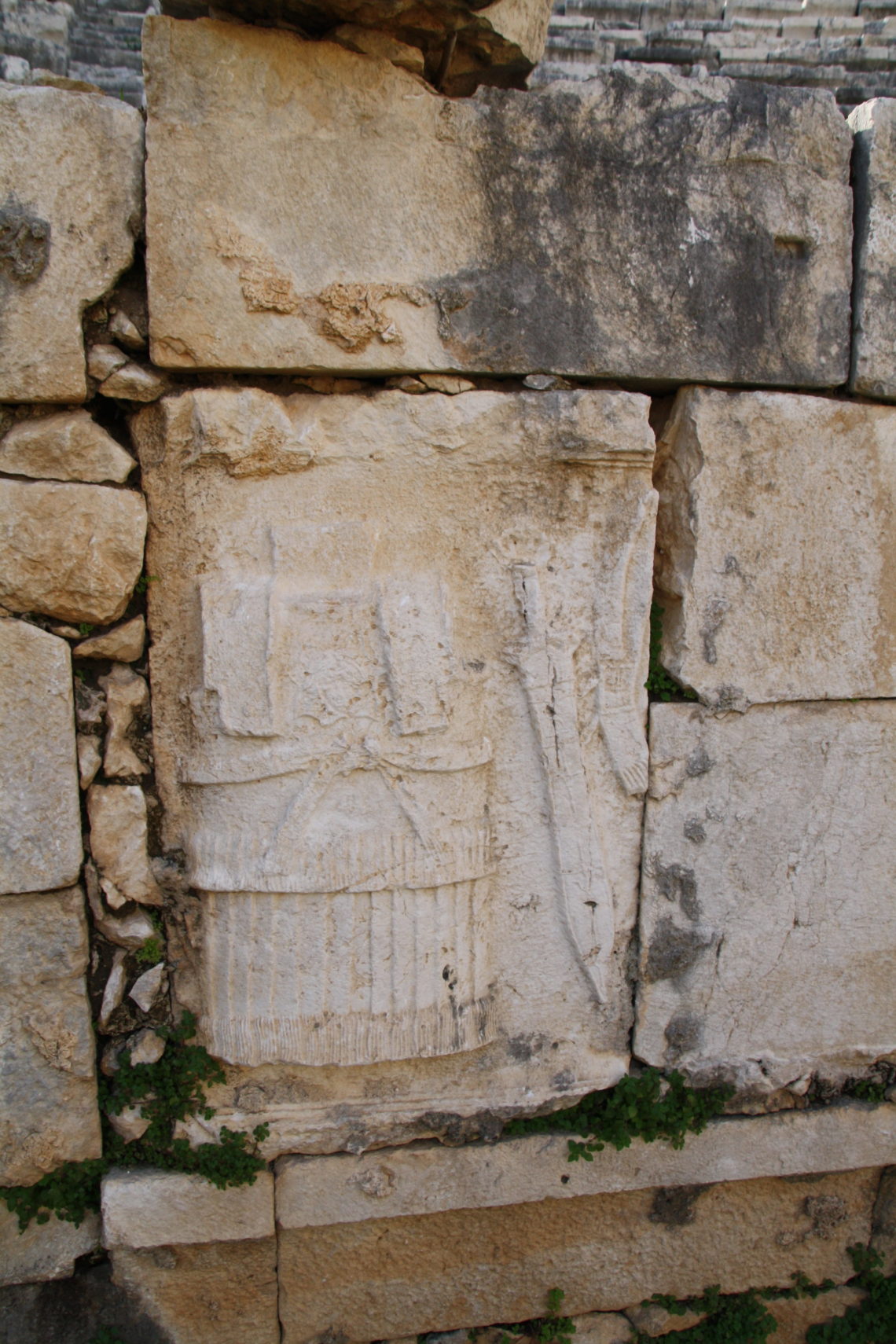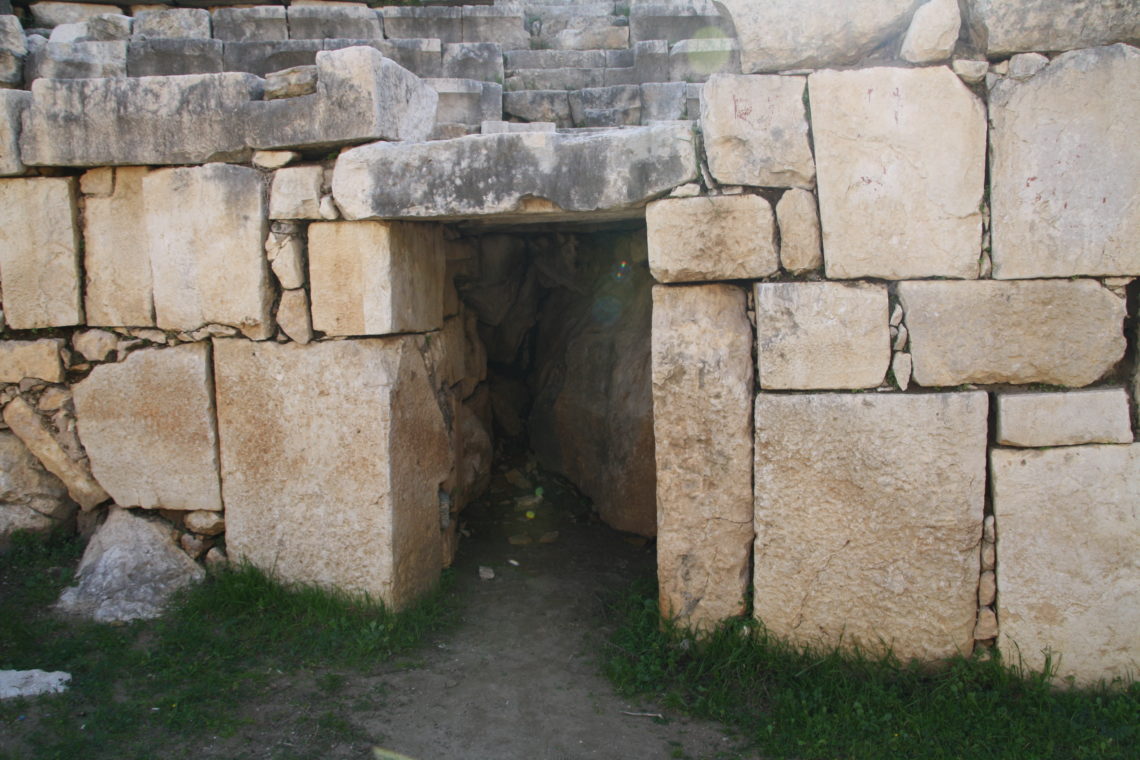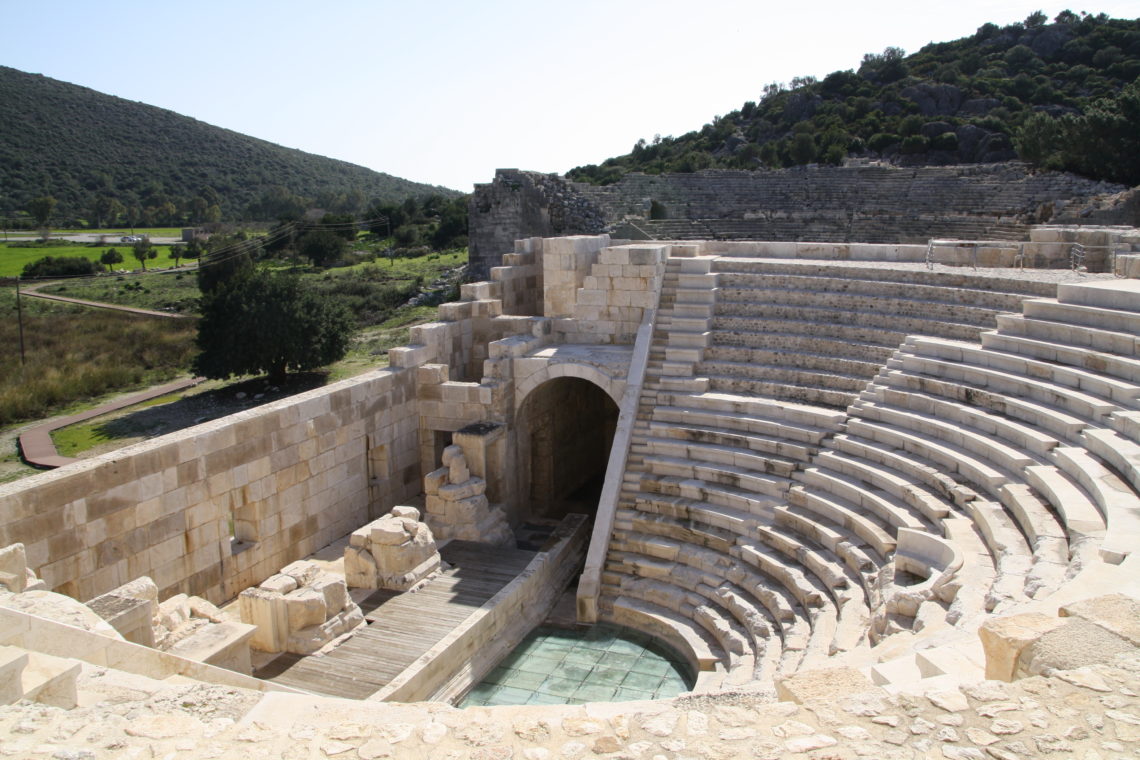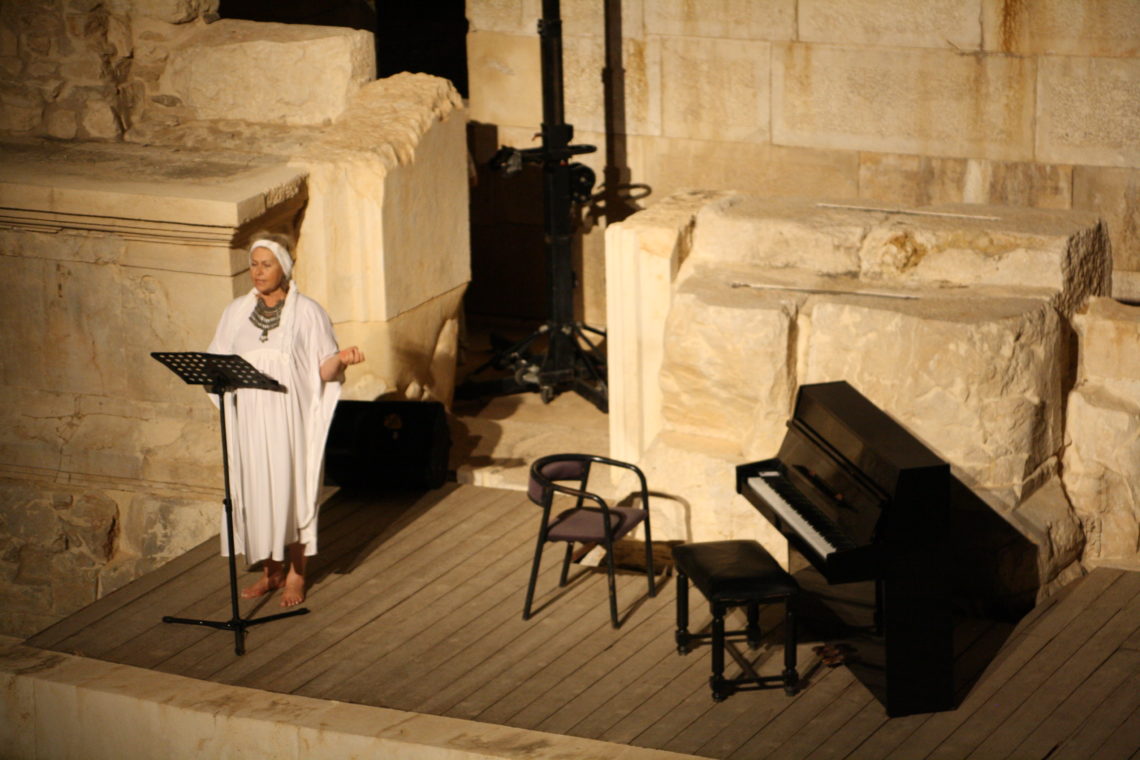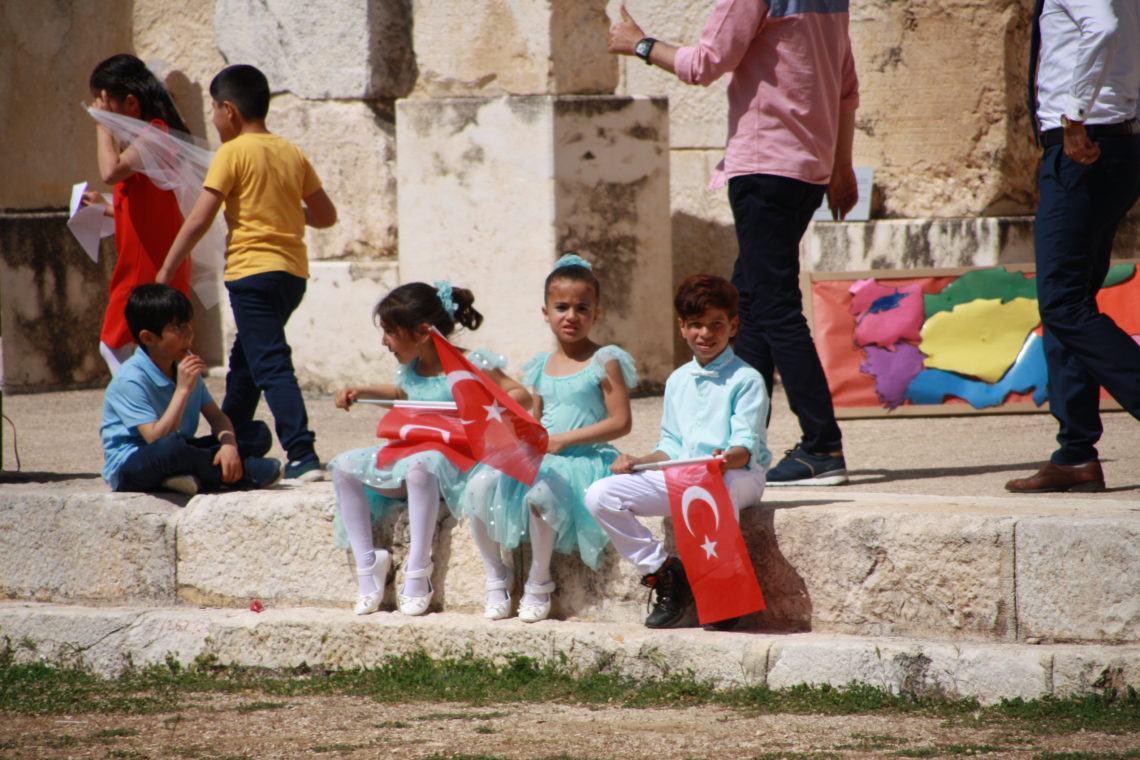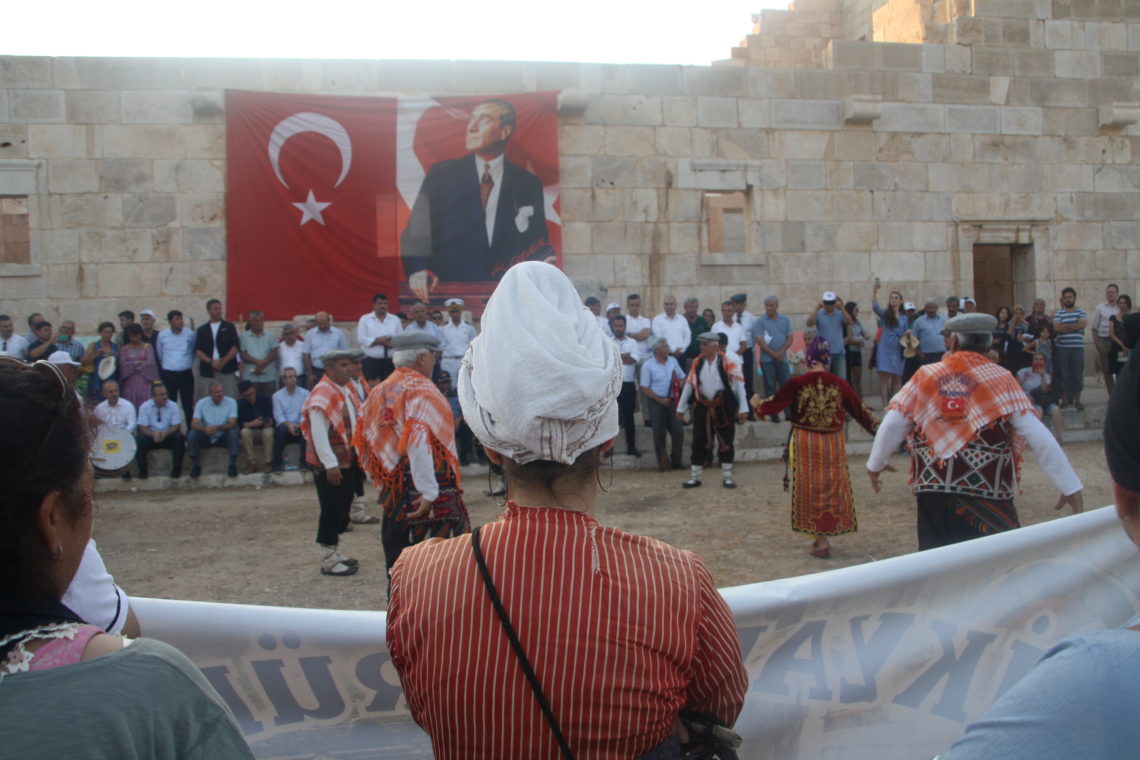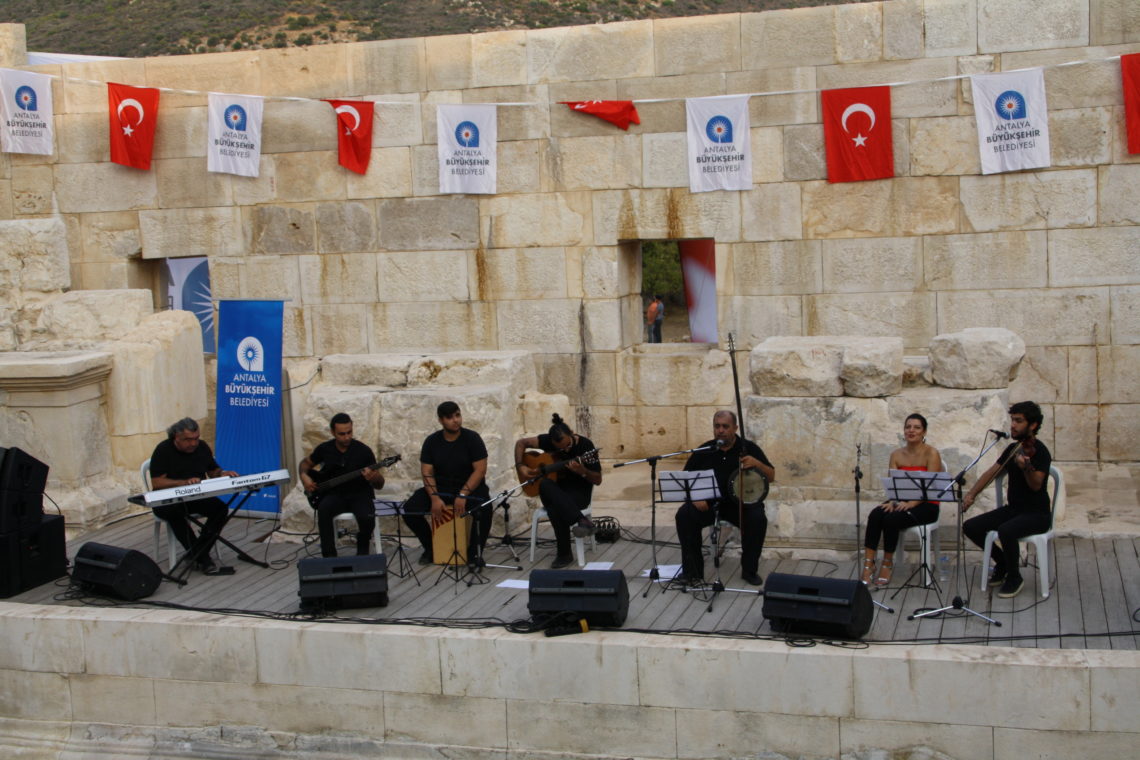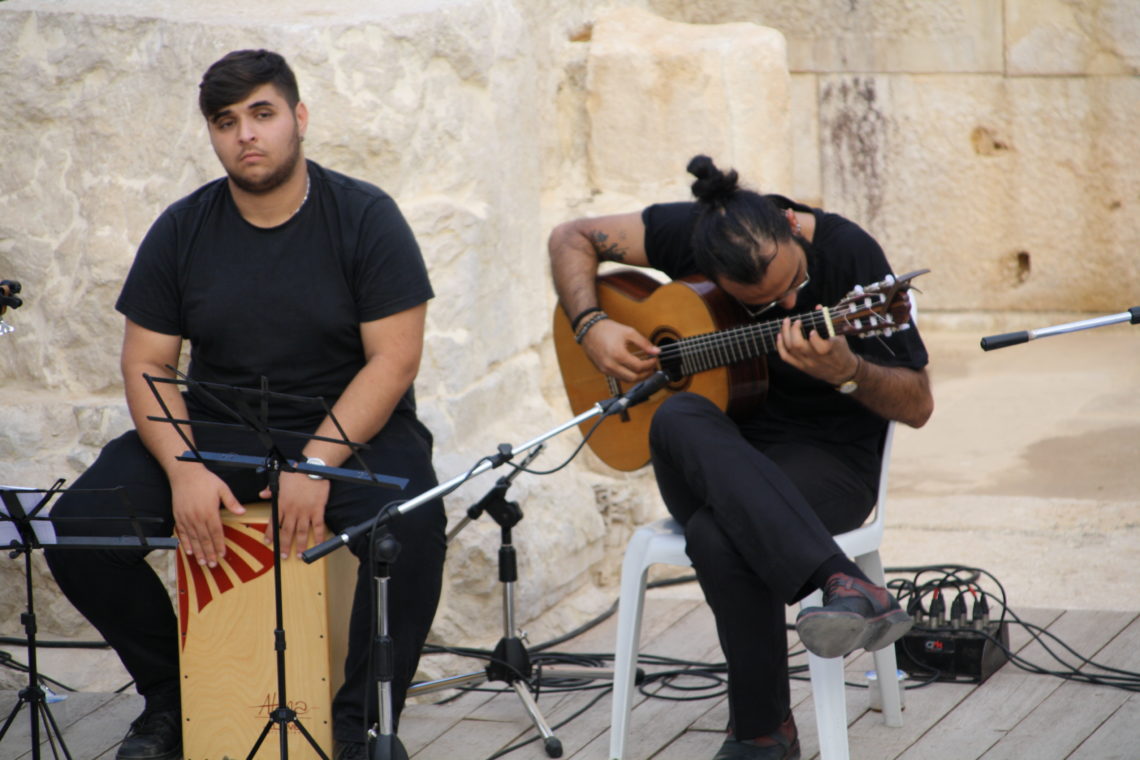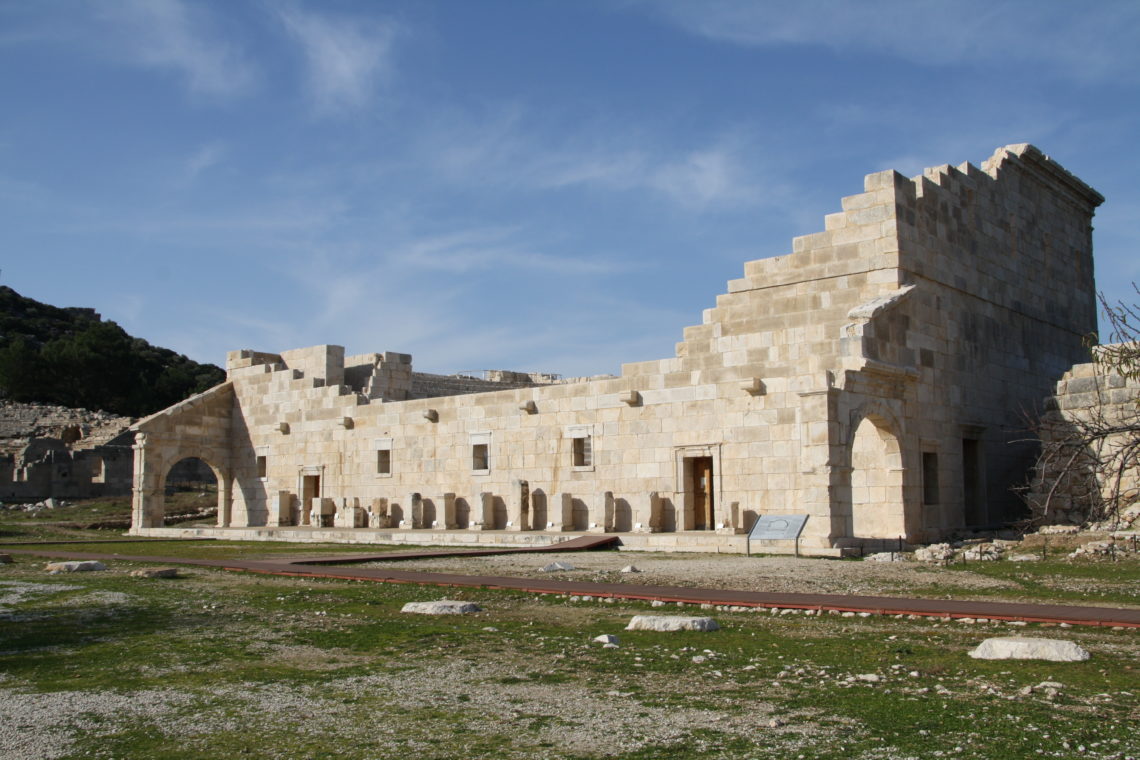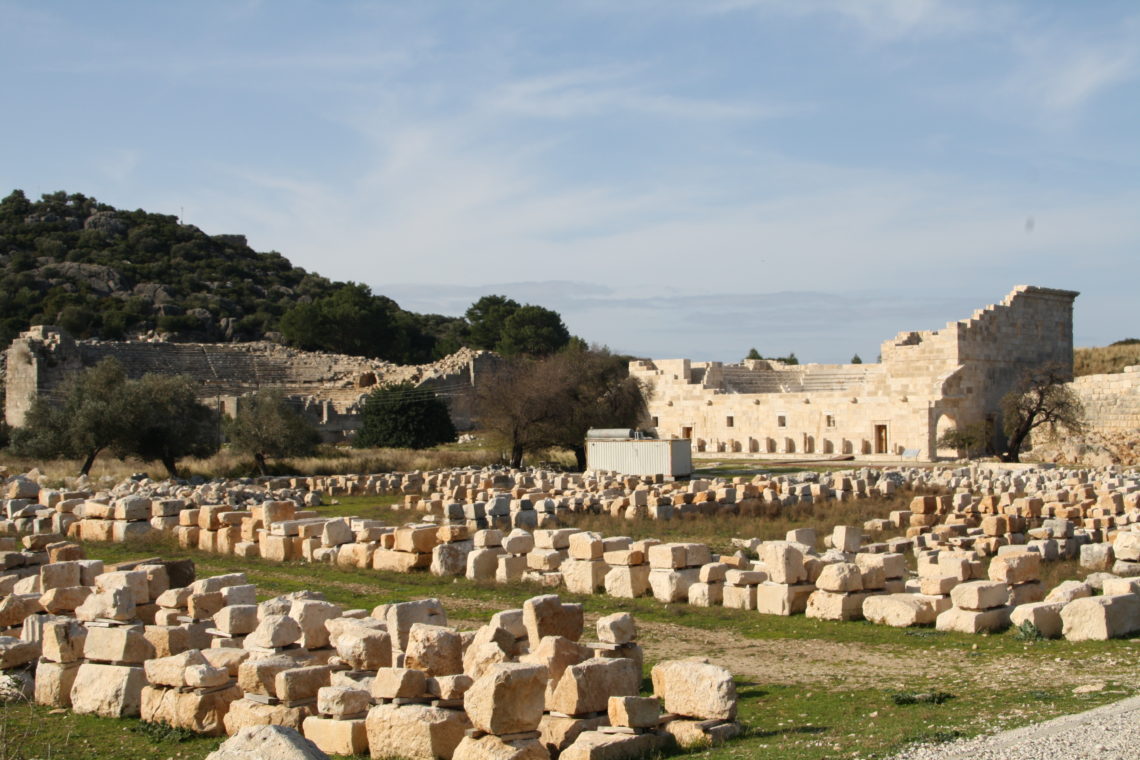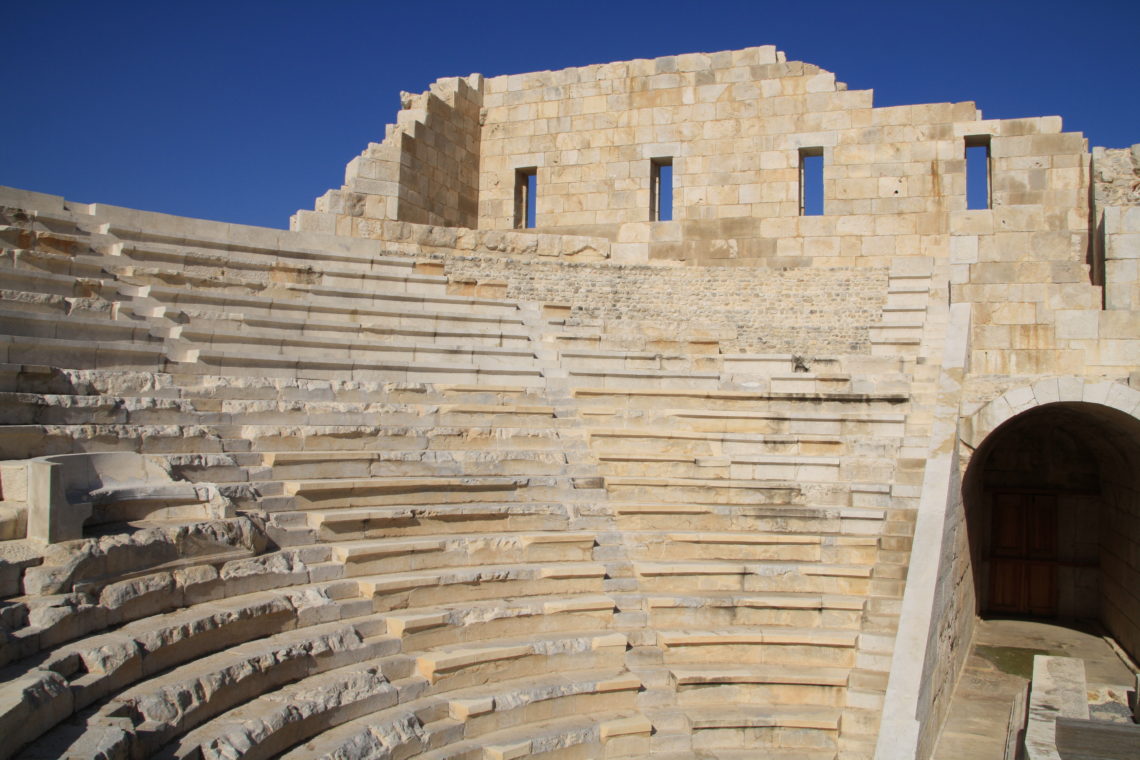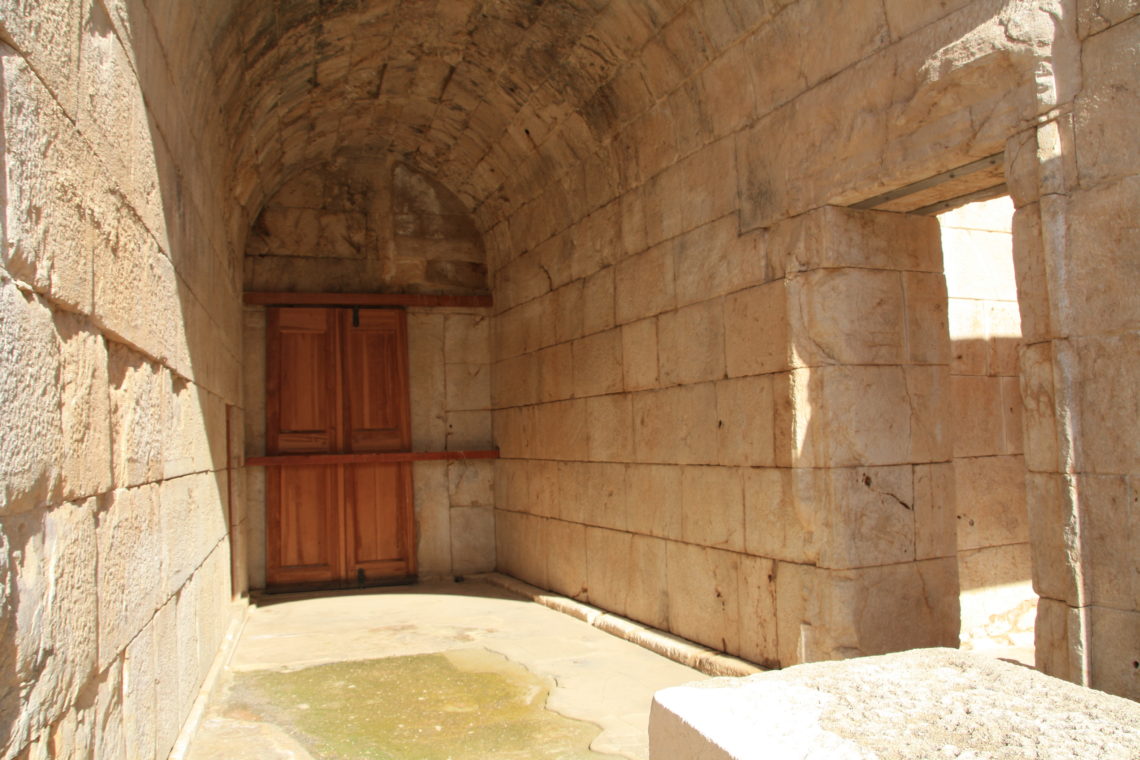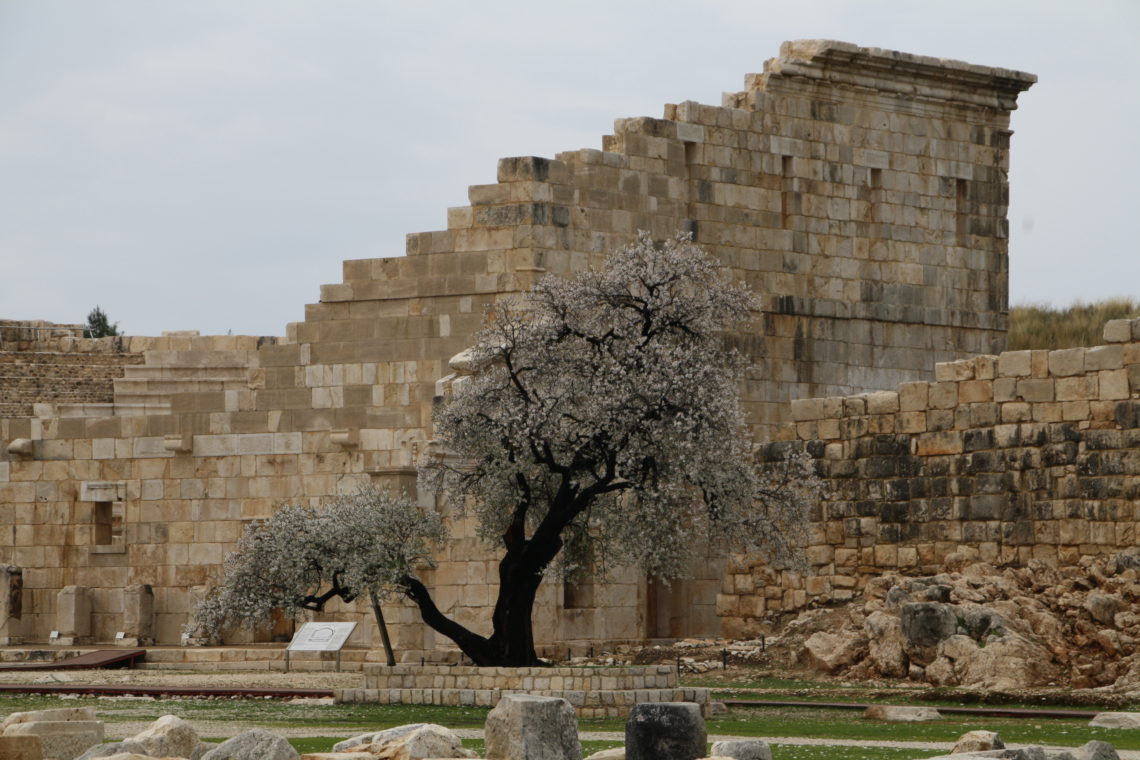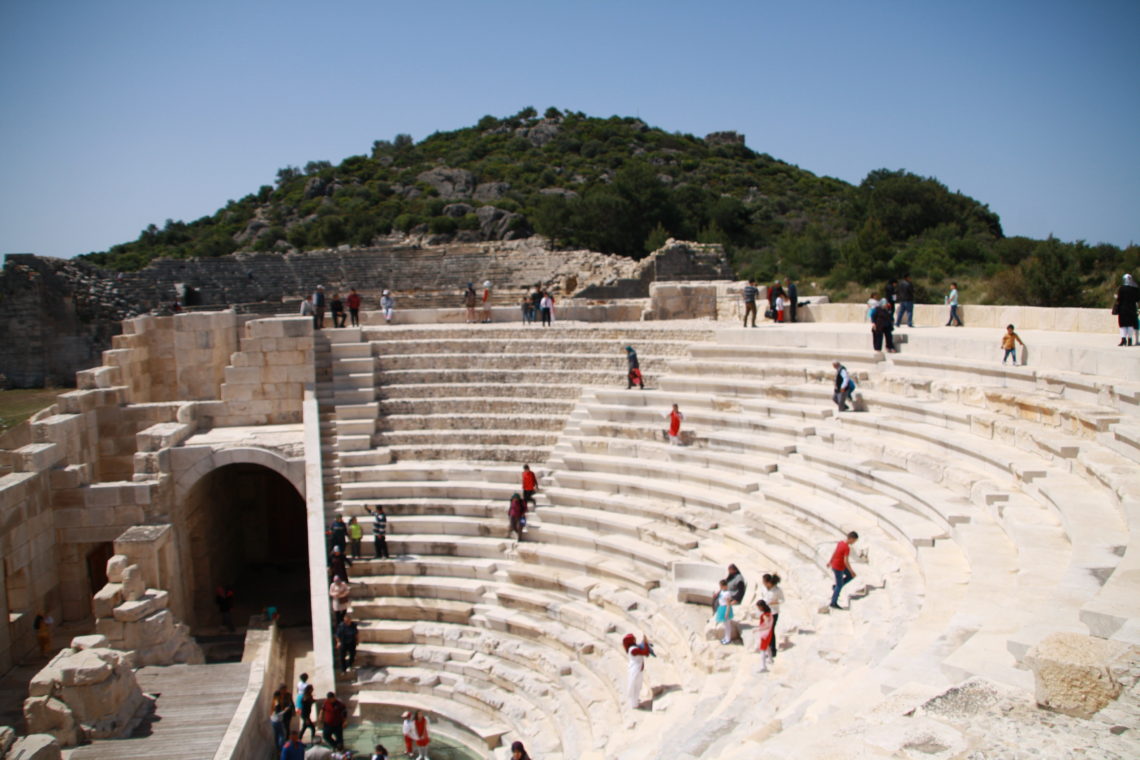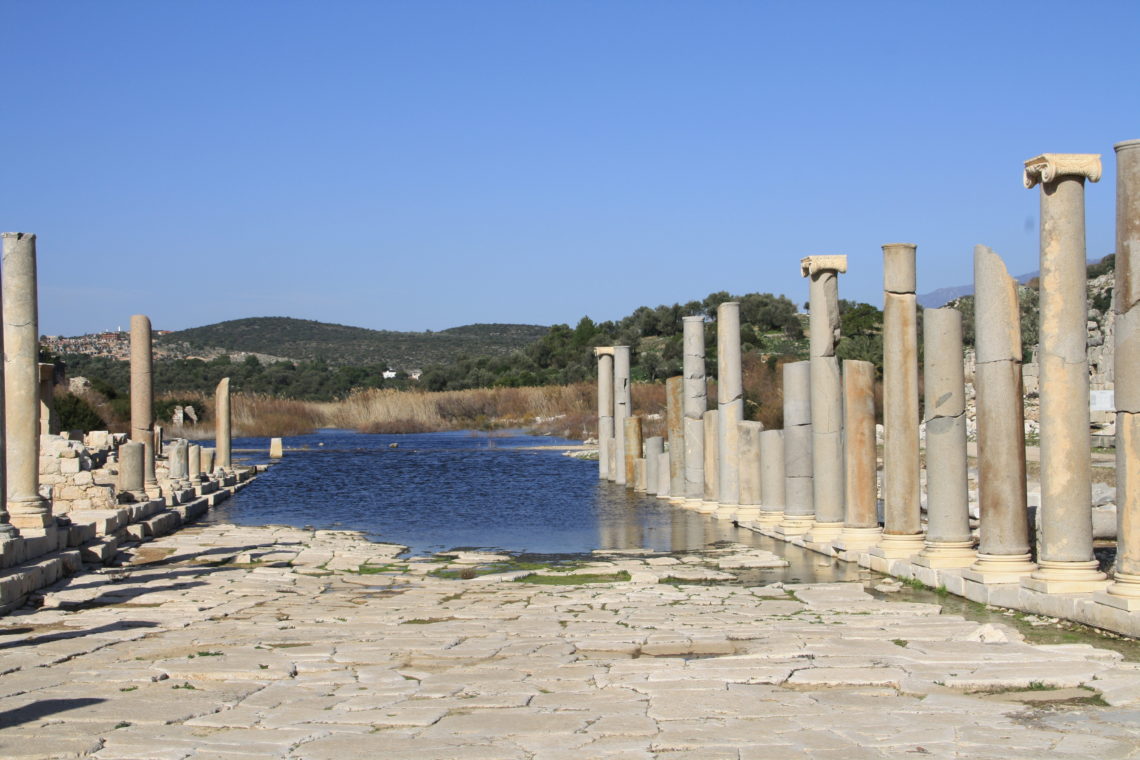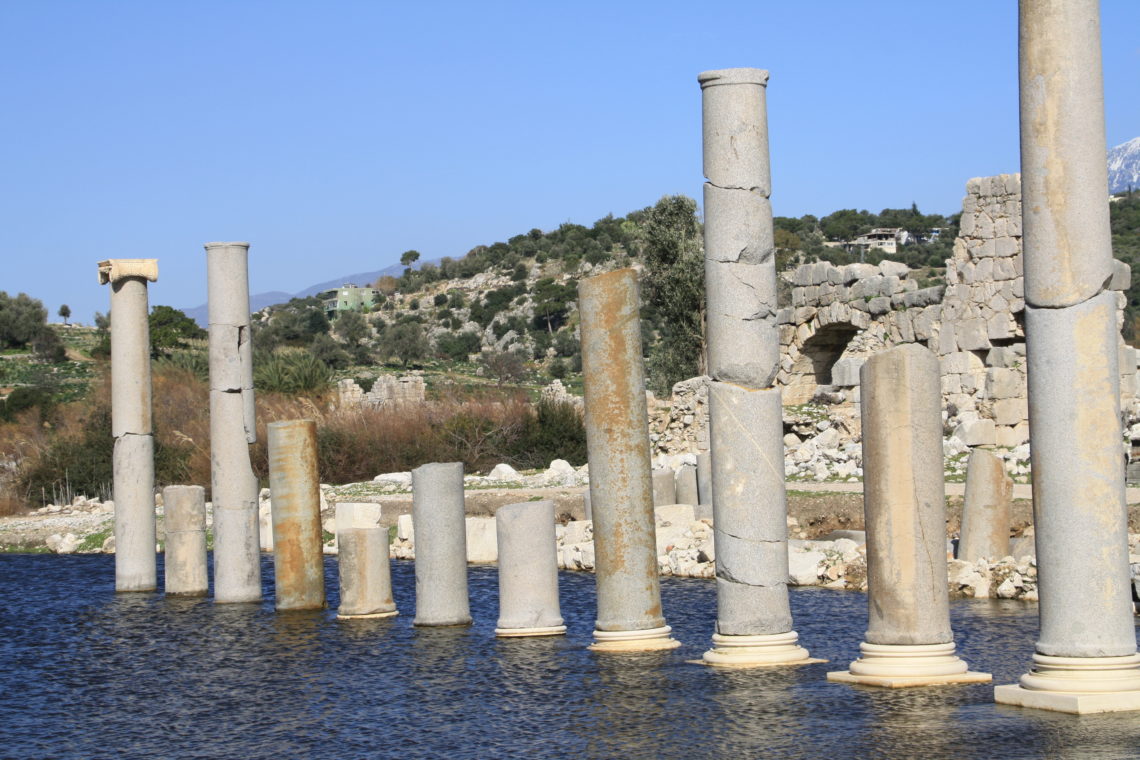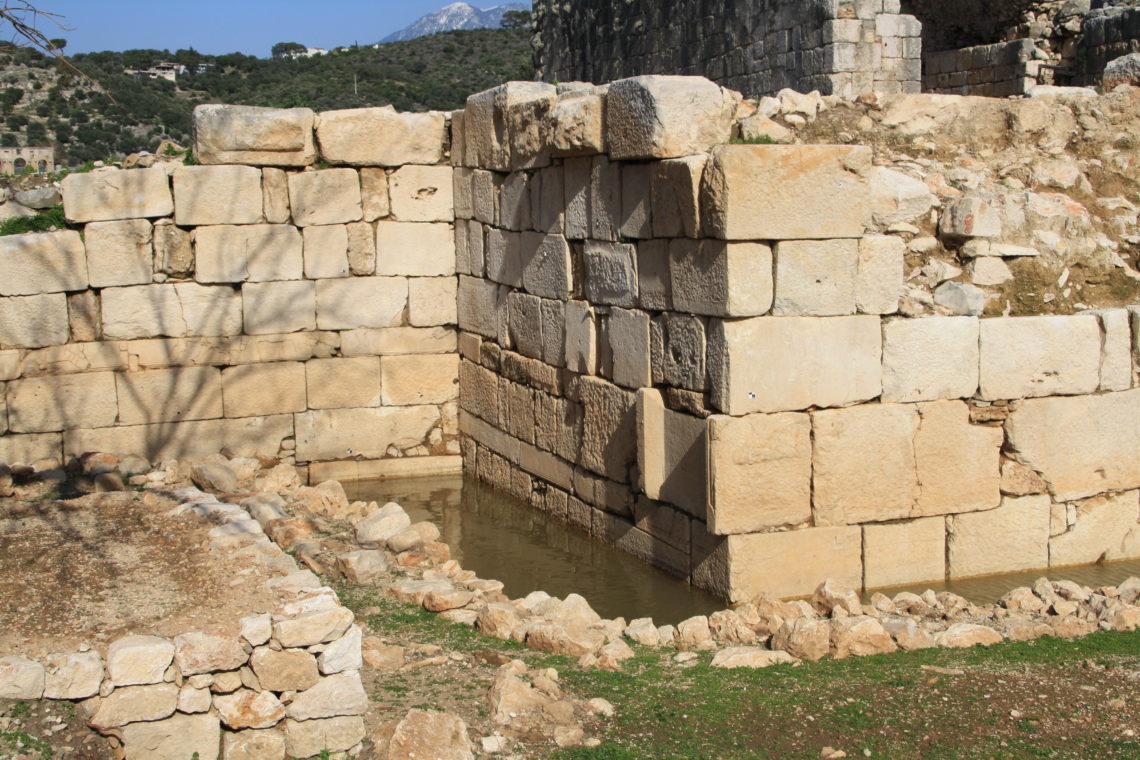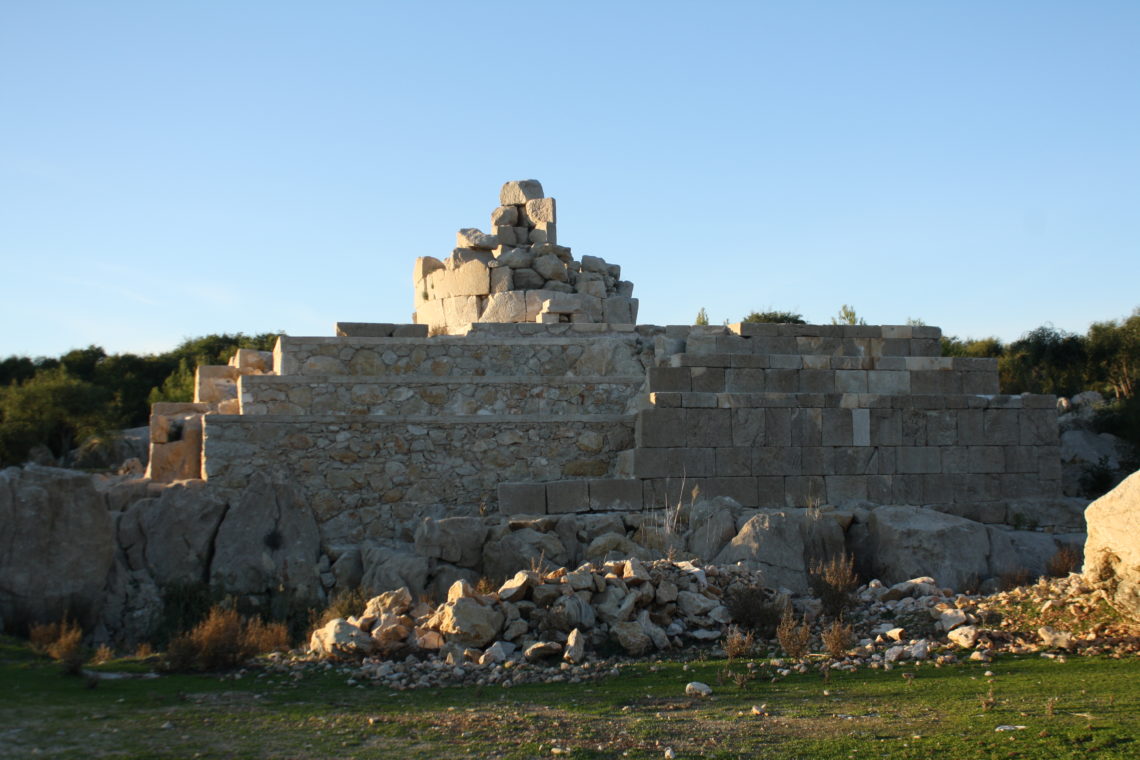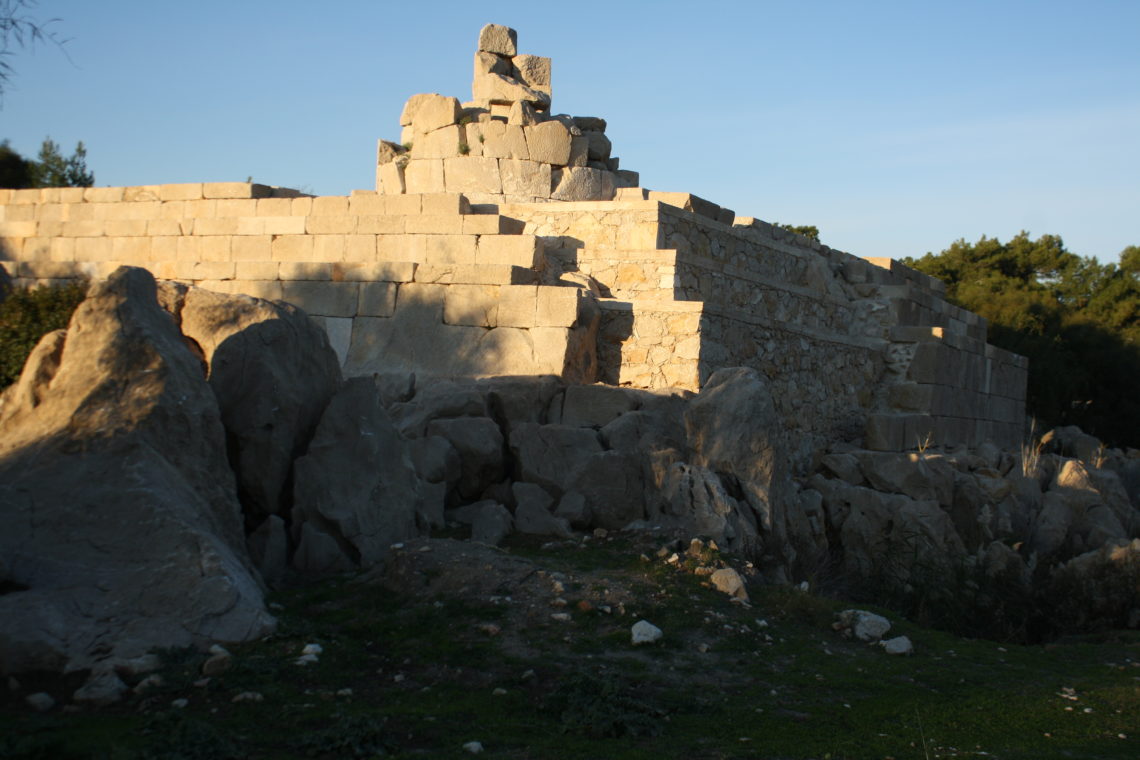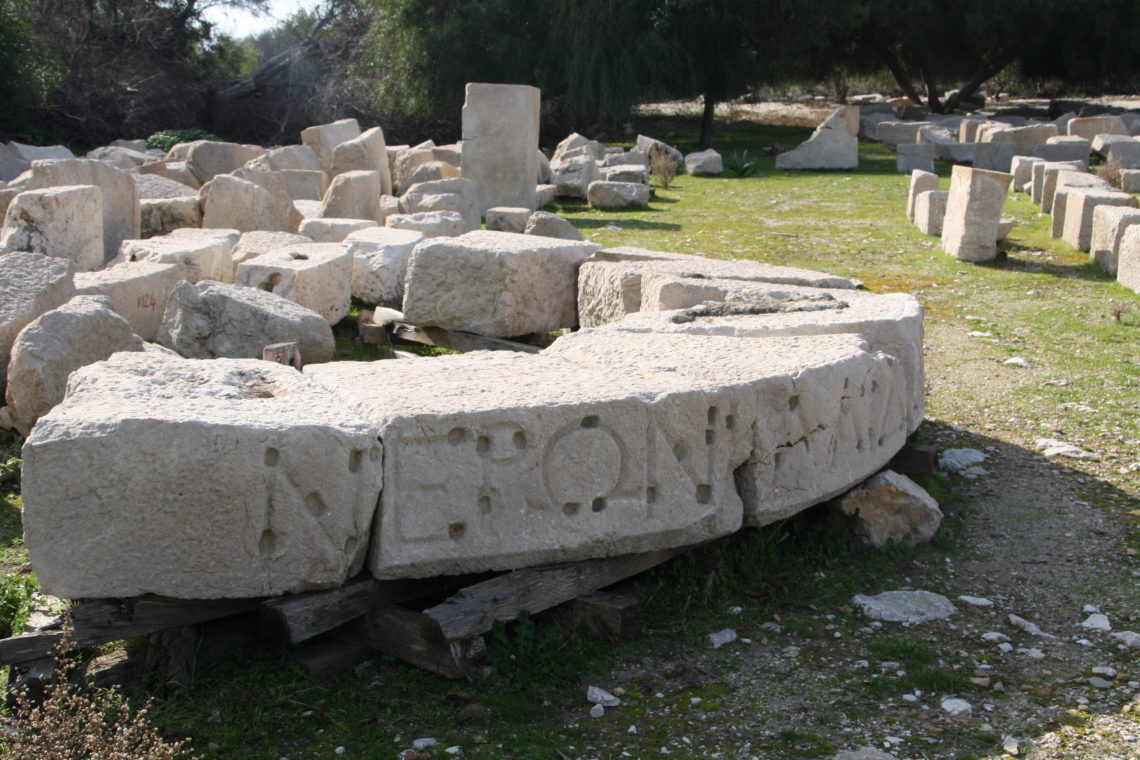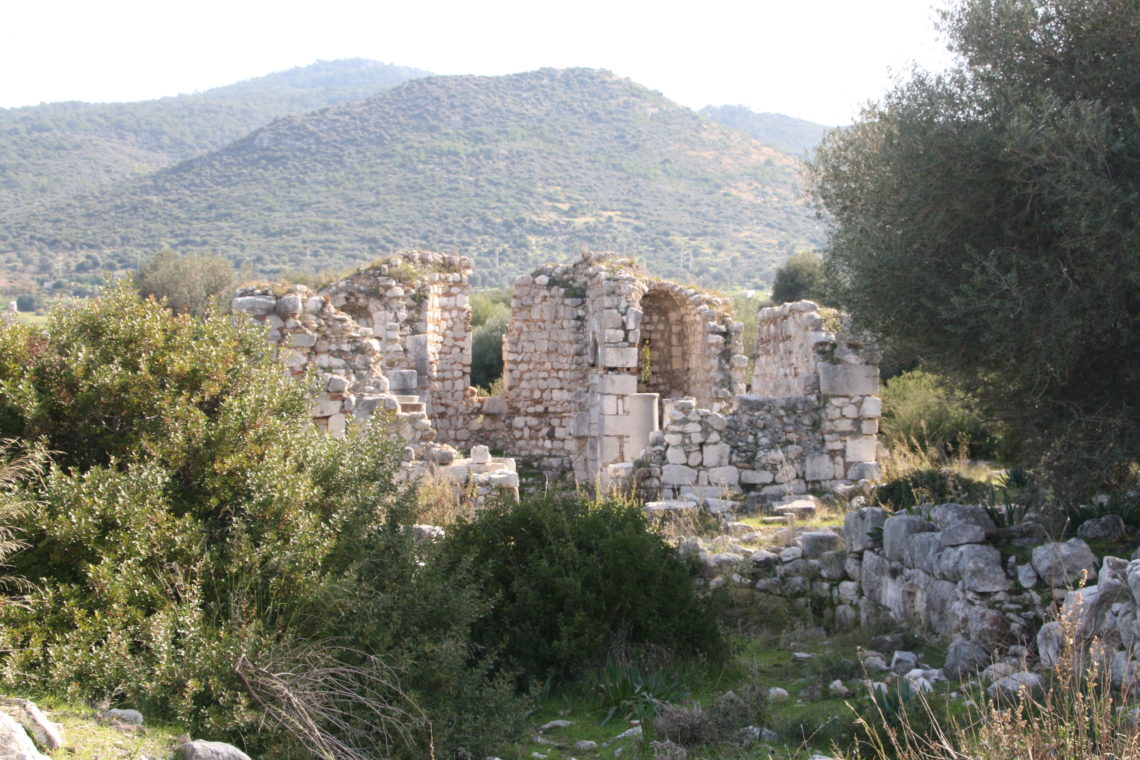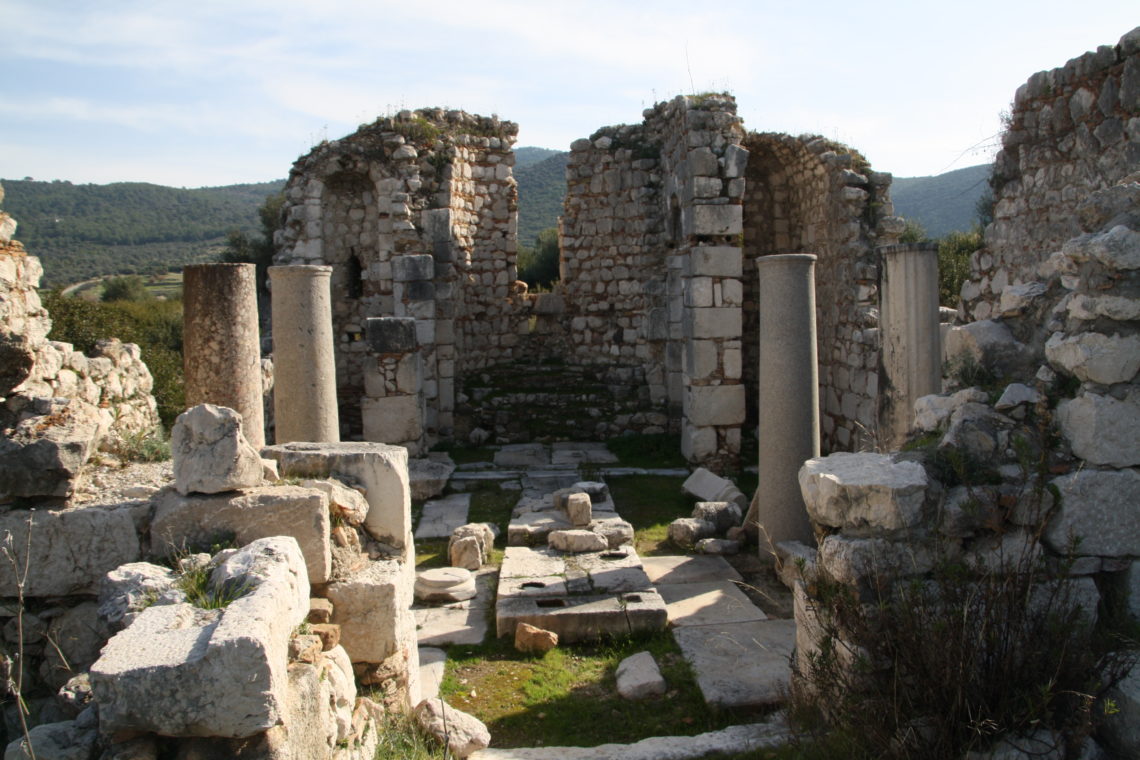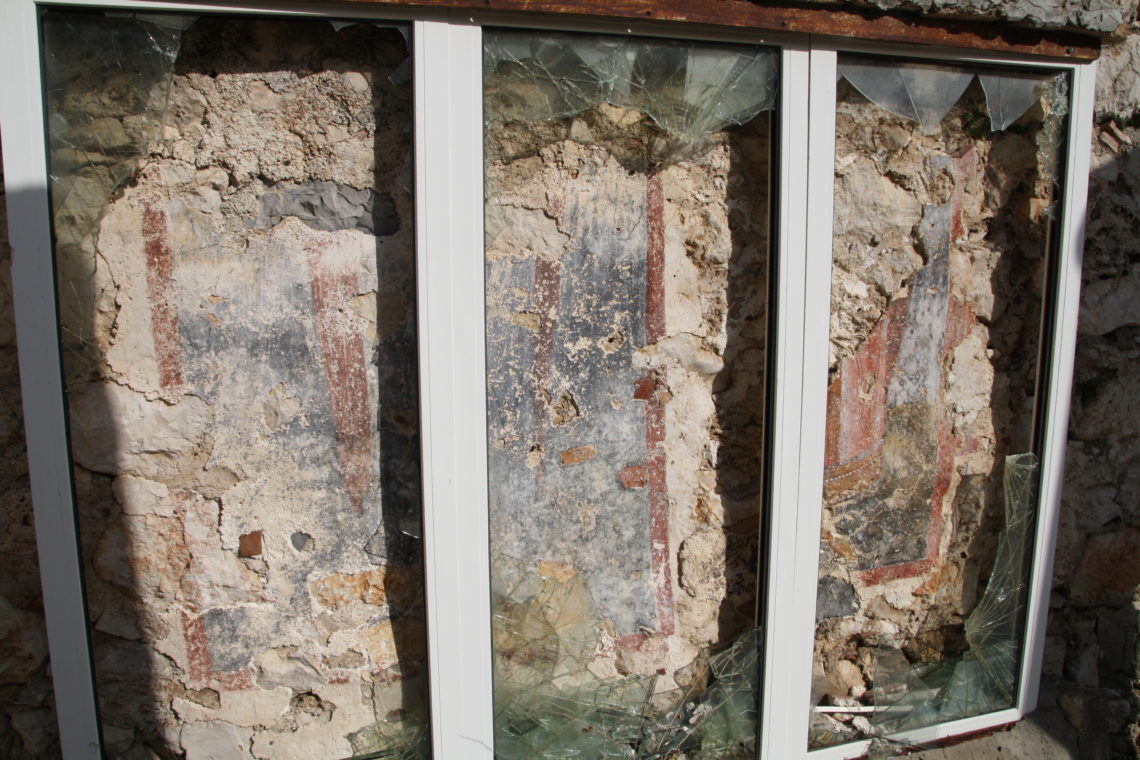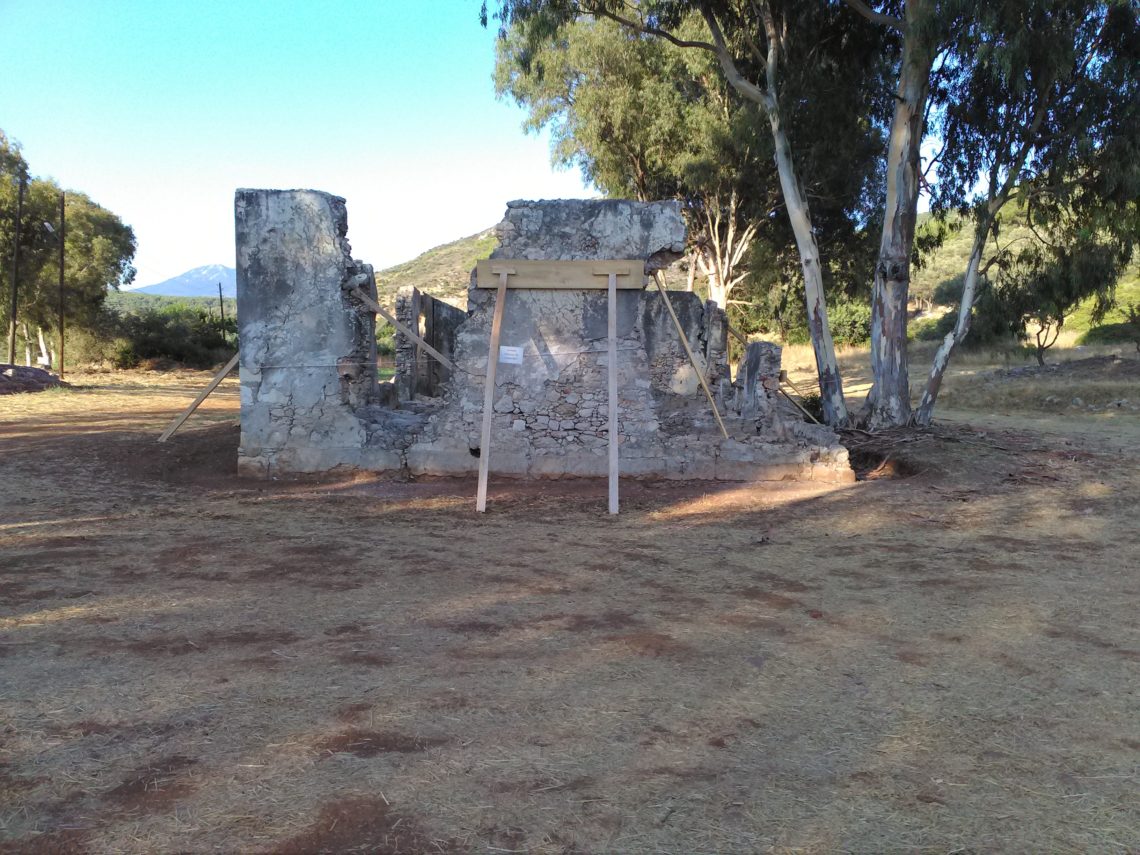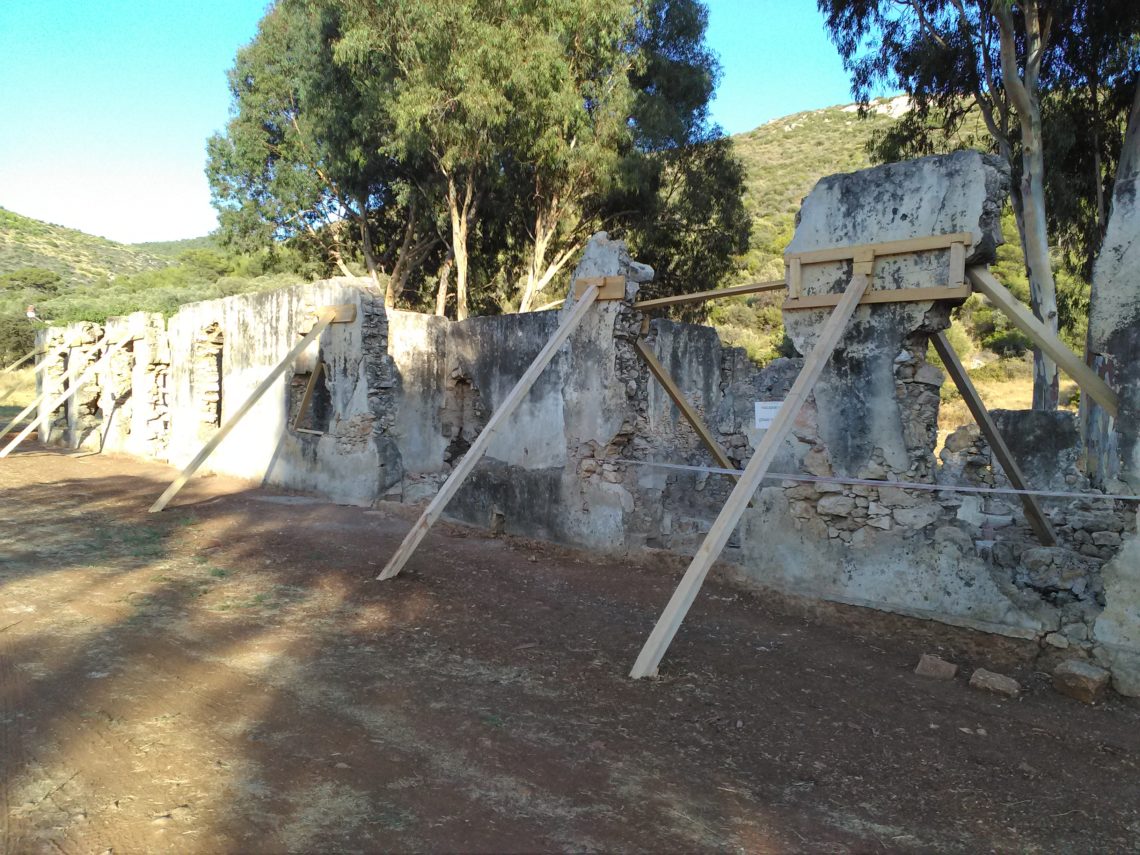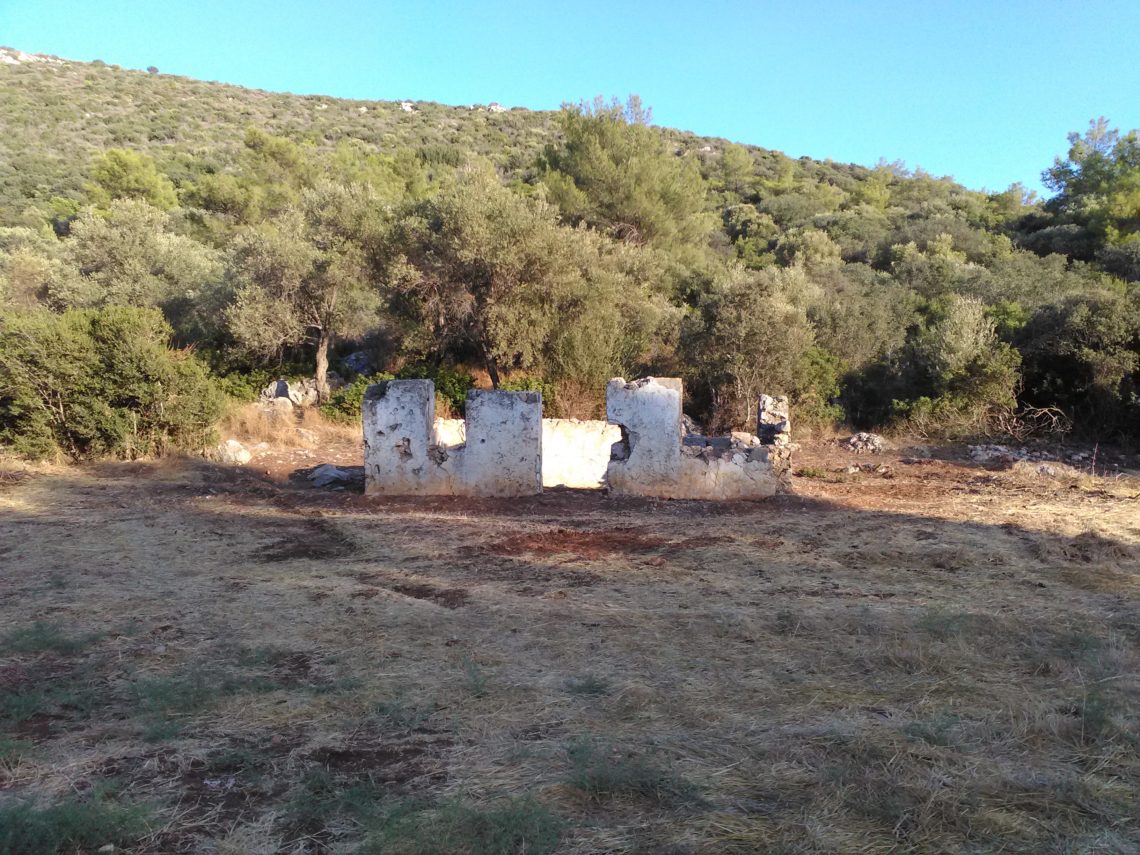2020 has been declared “The Year of Patara” by the Turkish ministry of Tourism and culture. As one of the 6 major cities of Lycia, Patara is well worth a visit. Only 15 minutes drive from Kalkan, 50 minutes drive from Kas, 1 hours drive from Fethiye and right on the doorstep if you are staying in the small village of Gelemis . Set in a stunning location, it is surrounded by mountains, breath taking sand dunes and is next to the stunning 12 km turtle nesting beach of the same name. Where the harbour once was is now a lagoon, home to an amazing array of birds and wild life and the whole area has been designated a Nature reserve. Hours can be spent exploring this unique atmospheric site where many of the public buildings which date back to the Lycian and Roman periods are slowly being excavated. Below we summarise for you some of the significant finds in Patara.
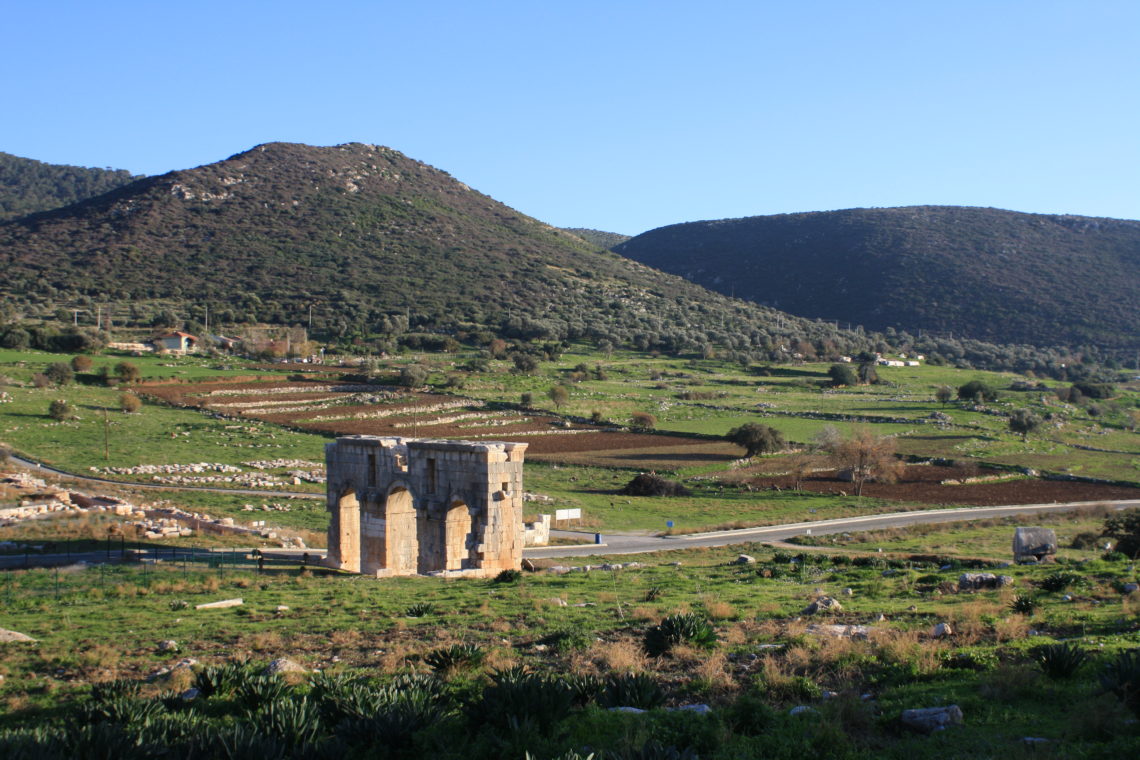
Arch of Medustus: This is the symbol of Patara, a triple vaulted triumphal arch built by the citizens of Patara in honour of Mettias Medustus, the Governor General of Lycia. The arch has a Necropolis to one side (filled with Lycian Sargophogi) and an octagonal pool to the other. If you stand to one side of the arch and look up, you will also see pipes across the top of the triple arch which were used to carry water (which was brought from the village of Islamlar via Delikemmer using a complex waterway) into the city.
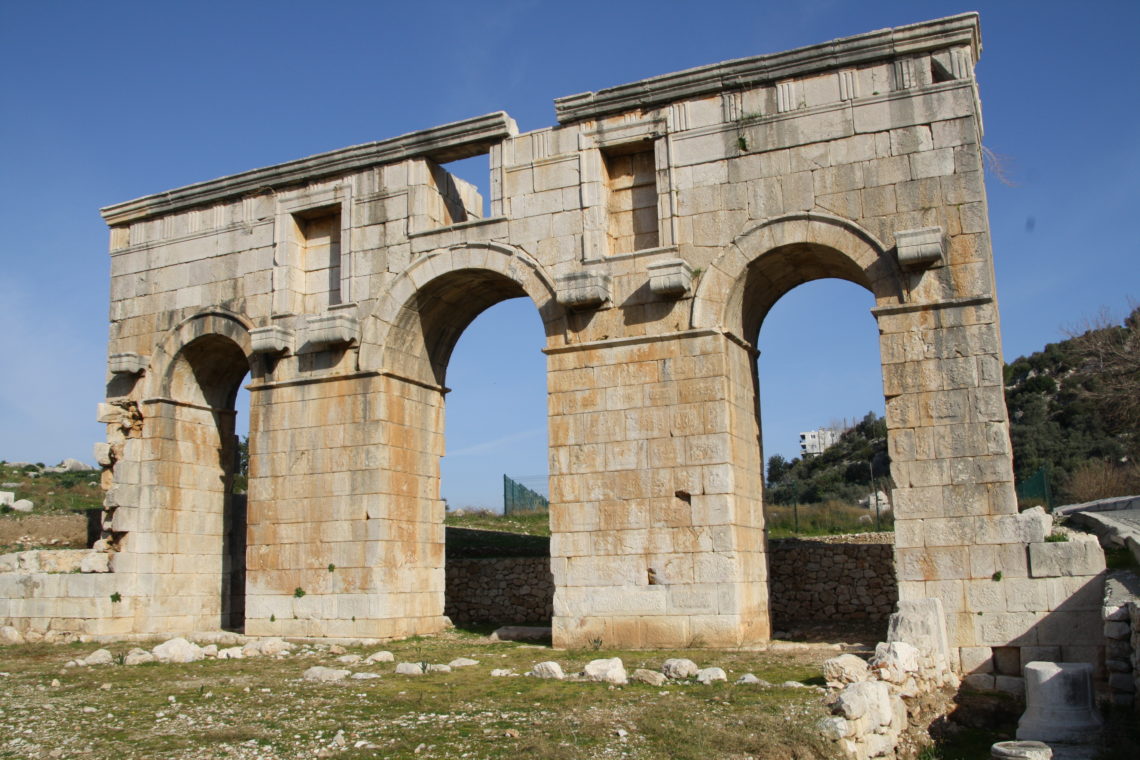
Theatre: The theatre was built during the 1st and 2nd century AD. It has a 38 rows of seating giving a seating capacity of 6,000. During the Eastern Roman period a wall was constructed between the cavea (seating) and the orchestra to create an area that was later used for gladiator and animal fights. The theatre is well worth visiting as it was one of the main public buildings in the city. Much of it is very well preserved as it remained under sand for hundreds of years. As you enter the theatre you will see inscriptions on the wall at the entrance and as you explore the cavea (seating area) you will see a number carvings of Roman soldier’s armour. The view for those who make the effort to climb to the top of the theatre is stunning. Here you can also find the remains of a temple.
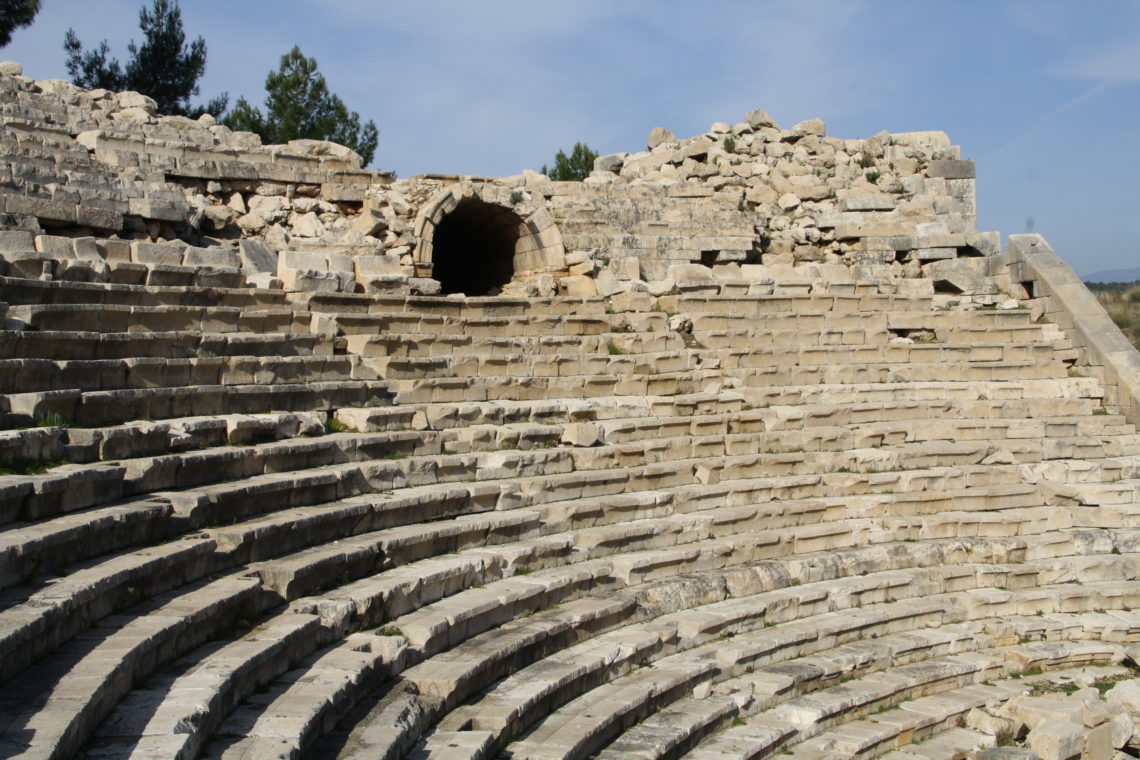
The Bouloutrion or Assembly hall of the Lycian League . Overlooking the theatre in the South and the State Agora in the East, the Assembly Hall was built of local limestone blocks in the shape of a small theatre. It was constructed in the early 1st century BC and was the building where the elected representatives of the Lycian league met. It has rows of stone seats arranged in a semi circle with a seating capacity of 1,400 people. The same arrangement used in the chambers of the American congress and believed to be the first democratic parliament building in the world. Its stone vaulted main entrance is impressive and the throne like seating where the Lyciarch (president of Lycia) sat is still in place..
The grand National Assembly of Turkey has undertaken the restoration and preservation of this building which now stands out amongst the many archaeological remains. It has been sensitively re constructed and houses an interesting small gallery of photographs and information. It is also being used once again for concerts. If you happen to be in the area when one of these concerts is taking pace, it is well worth coming along for the experience.
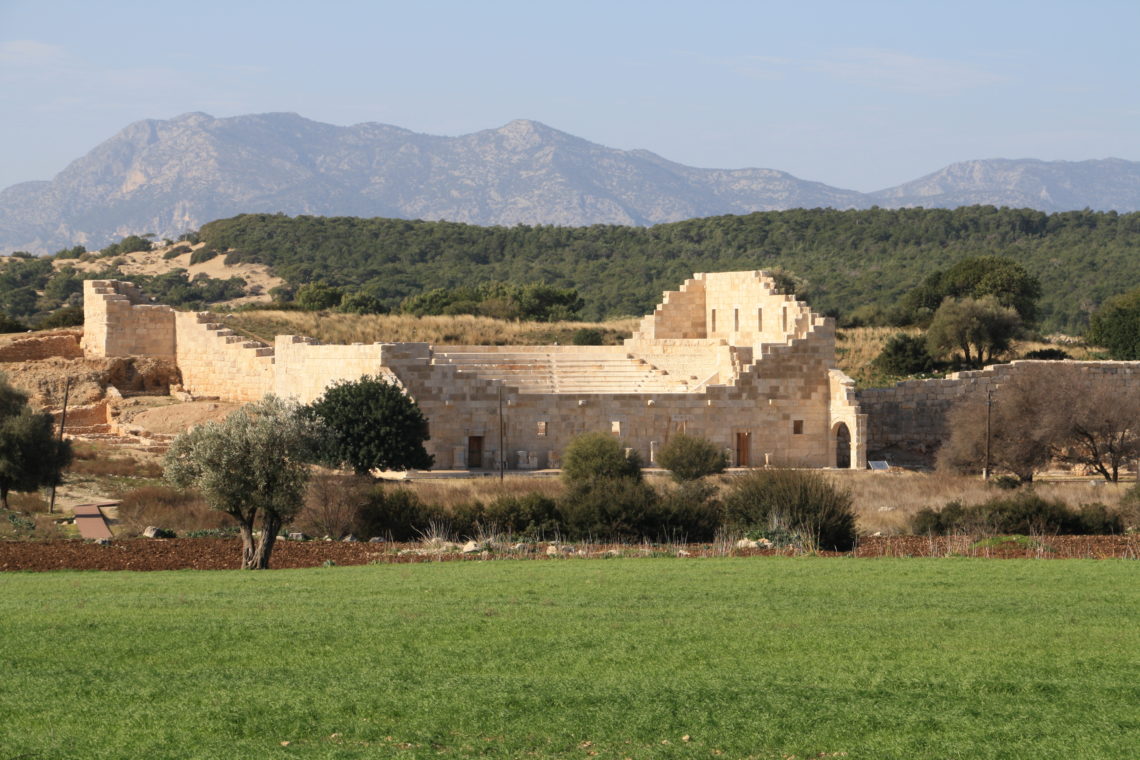
The main street: The main street connected the inner harbour to the Agora infront of the Bouloutrion. It is one of the widest and best preserved streets in Lycia. Both sides of the street are lined with Ionic order colonnades. The colonnade on the East side consists of granite columns and the west side consists of marble columns. The floor of the western colonnade was once ornamented by a fine mosaic floor, but this is no longer there. Behind this colonnade one can still see the remains of shop fronts. To the west side of the street are the remains of the Central baths and the Nero Vespasianus Baths. The Central baths are currently being excavated.The absence of wheel marks along this street indicates that it was probably used for pedestrians only. After the street collapsed following several consecutive earthquakes it was completely flooded and even nowadays if you visit in the winter months, one end of the street can be flooded with water and the Roman citizens have been replaced with tadpoles, frogs and toads who provide a regular morning chorus in the Spring!
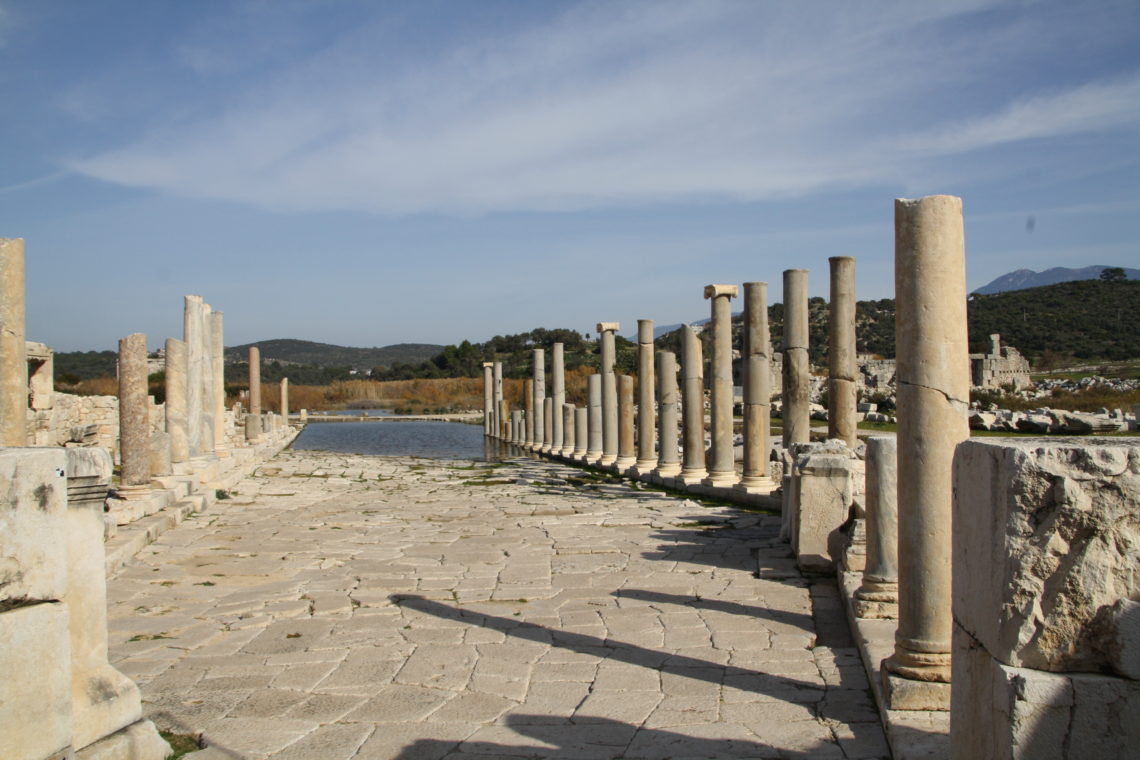
The Lighthouse: Patara was the major naval and trading port of Lycia. It had an outer and an inner harbour. At the entrance to the harbour was a lighthouse, which is believed to be one of the oldest standing light houses in the world. Built around 60 AD, the light house would have been 15 – 20 m high, however little remains standing nowadays. Lettering shows that the lighthouse was dedicated to Emperor NERO. The letters which are carved into the stones that would have surrounded the lighthouse walls, would have been covered with brass which reflected in both the sunlight during the day and the lights from ships at night.It is thought that the lighthouse was destroyed in a tsunami. There are plans to restore the light house and there are hopes that the archaeological team will get a grant in the near future to start work on this.
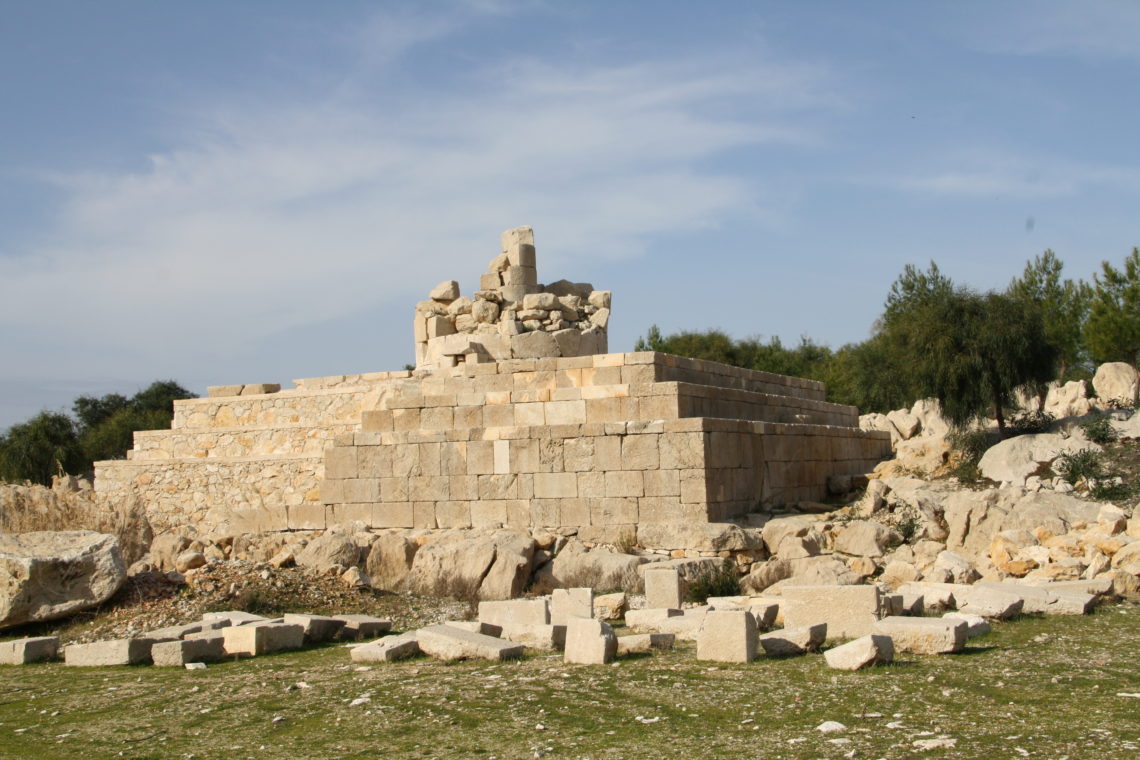
Harbour bath and palm grove of Leto: The harbour baths are situated to the right shortly after you pass the triple arch of Patara. Restoration work is going on to preserve what remains of the building and to stop it collapsing. On one side of the baths there is well preserved street along which would have been a number of eateries and tea houses, where people would have gone to eat or drink after they had finished at the Baths. The baths were also known as the “date baths” named after the date palms next to which they stand. They were built in the Roman period and used up to and including the Byzantine period.
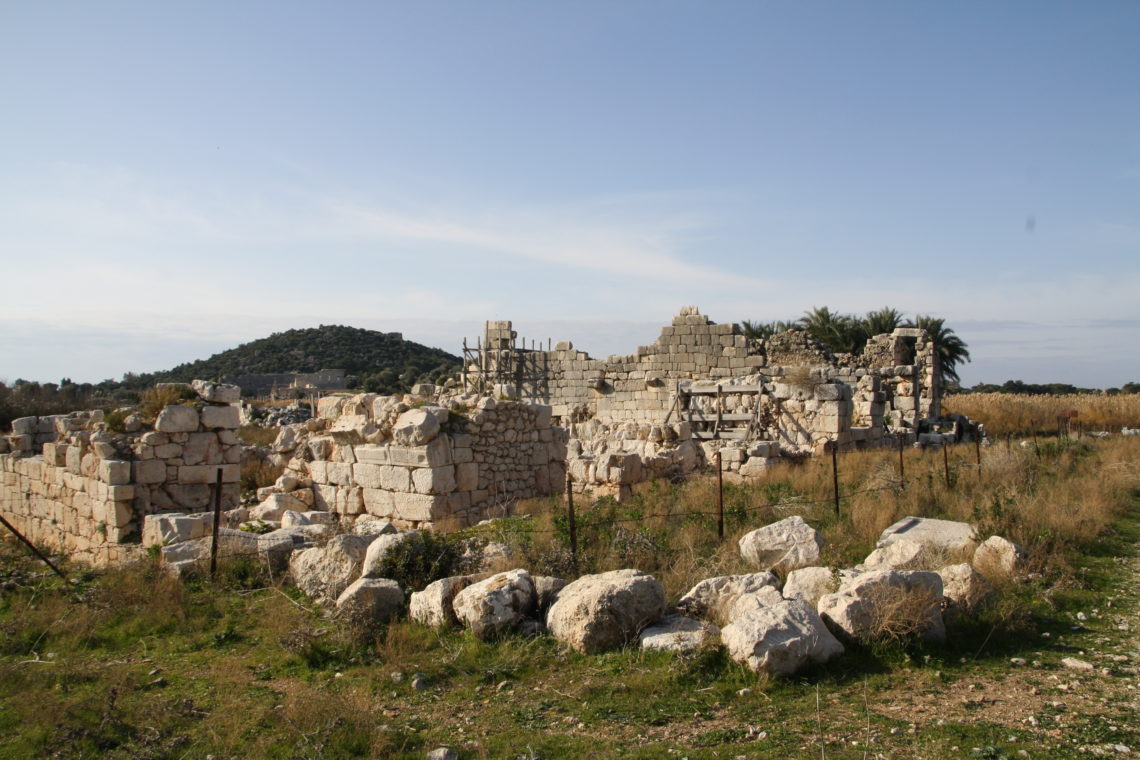
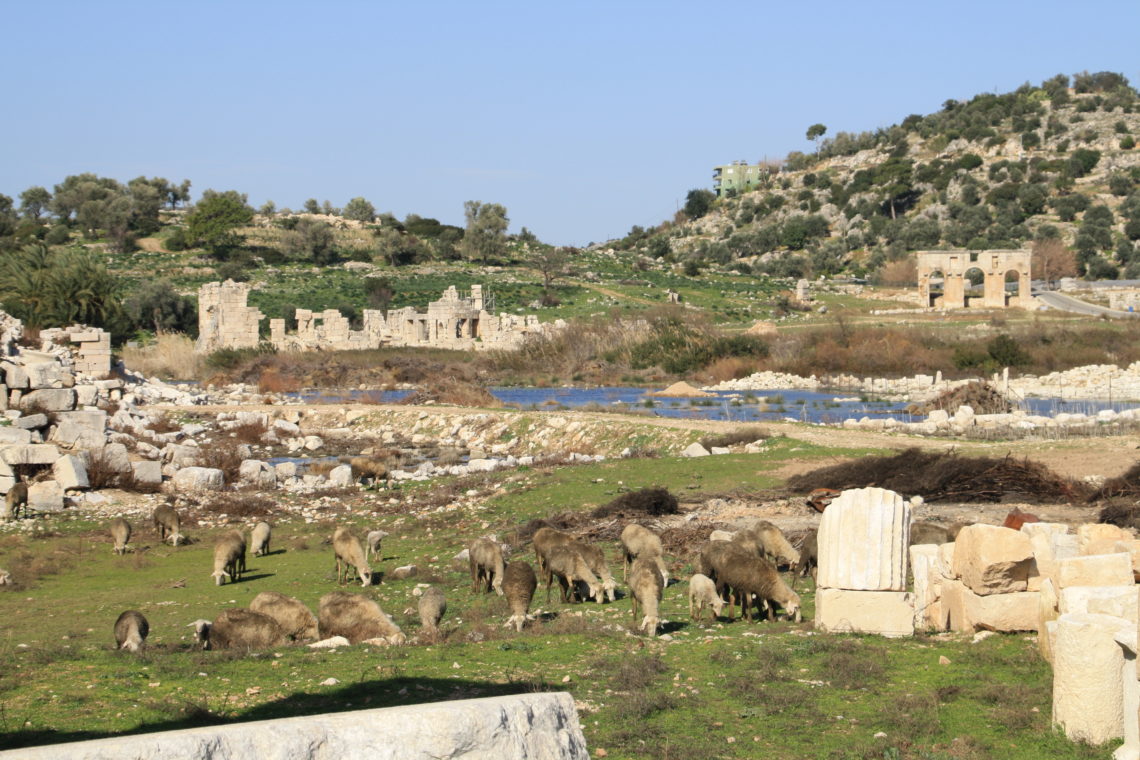
Next to the harbour baths is the palm grove of Leto. The Legend goes that the god Apollo was the son of Leto and Zeus. Leto had to search for a place to give birth to Apollo and Artemis. It is believed that this was in ancient Lycia and some believe that Leto may have given birth to Apollo in Patara . It is believed she gave birth at a sacred lake ( “wheel round lake – Tekerlek Golu) next to a palm grove. There is no other ancient city where myths and reality so perfectly coincide with each other which suggests that these may be the palm trees under which Leto gave birth to Apollo.
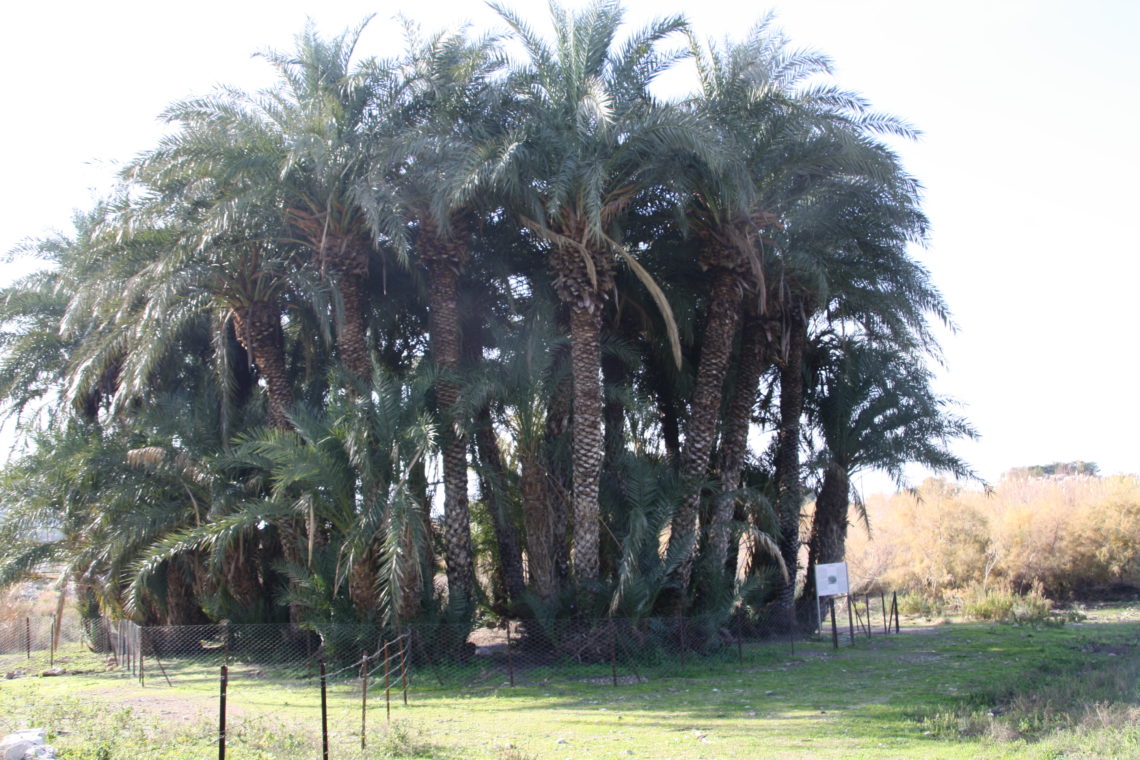
The Granary: To the west side of the ancient harbour is a large granary, the trade centre of the city of Patara in Roman times. It measures 75m x 25m, divided into 8 sections and was probably 2 storeys high. It was built during Emperor Hadrian’s visit in 131 AD. Cereals and other goods to be shipped to Rome would have been stoerd here and it is most likely that it would have been surrounded by other commercial buildings.
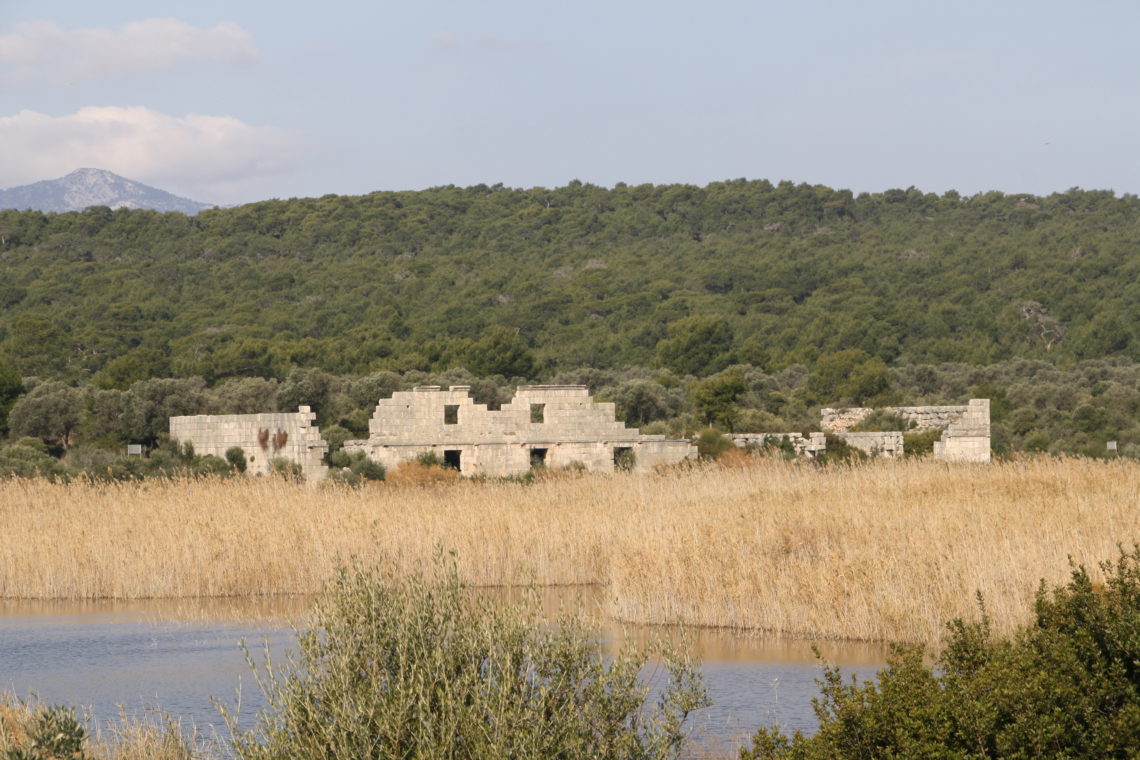
The birth place of St Nicholas: In Christian history Patara is known for being the birth place of St Nicholas (born c 250-280 AD). The population of Patara at that time would have been around 15,000. The city enjoyed some sea trade but relied mainly on farming, textiles, pottery, woodworking, glass making, metal work, leather, bone and shell craft, brick, tile and stone work, all for local use. During St Nicholas’ lifetime the harbour gradually silted up and the city lost much of its sea faring importance but many of the structures that are standing today would have been familiar to Nicholas. This famous citizen from a wealthy family moved from Patara to Demre, where he went on to become Bishop of Myra and it is well worth visiting St Nicholas Church in Myra (Demre) about 1.5 hours due east from Patara. Although there is little to see in Patara that is directly related to St Nicholas in particular, there is plenty of evidence of Patara as a Byzantine city with a number of churches that are slowly being excavated. There is a small church in particular, within the Byzantine city walls (Medieval town church) that is hidden away and if you find it you are rewarded with the remains of an old stone church with some original frescoes on the wall.
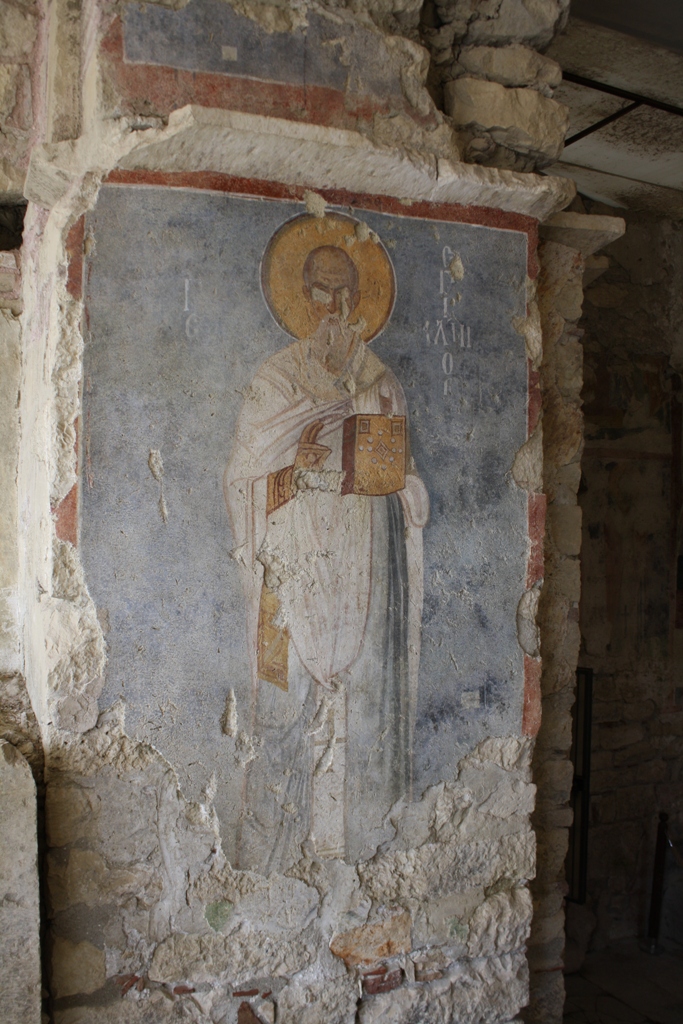
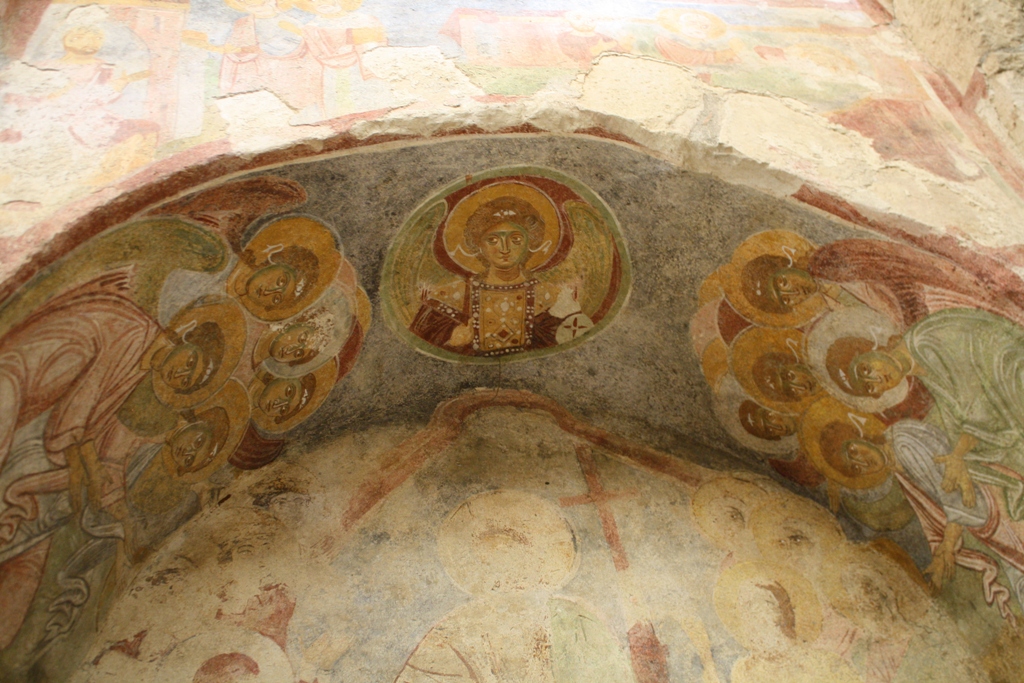
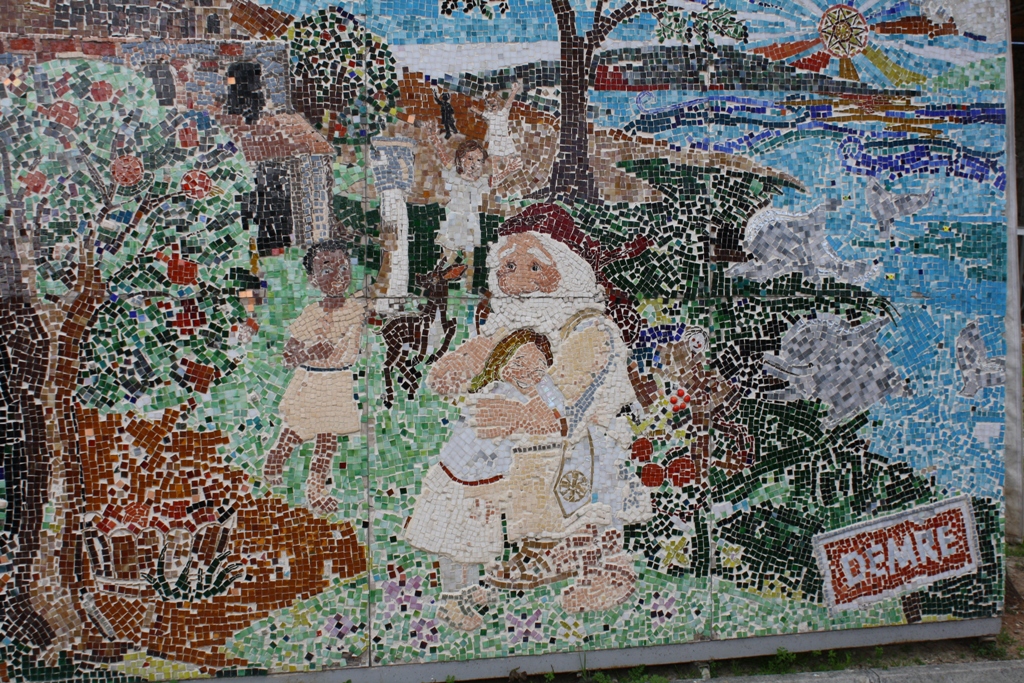
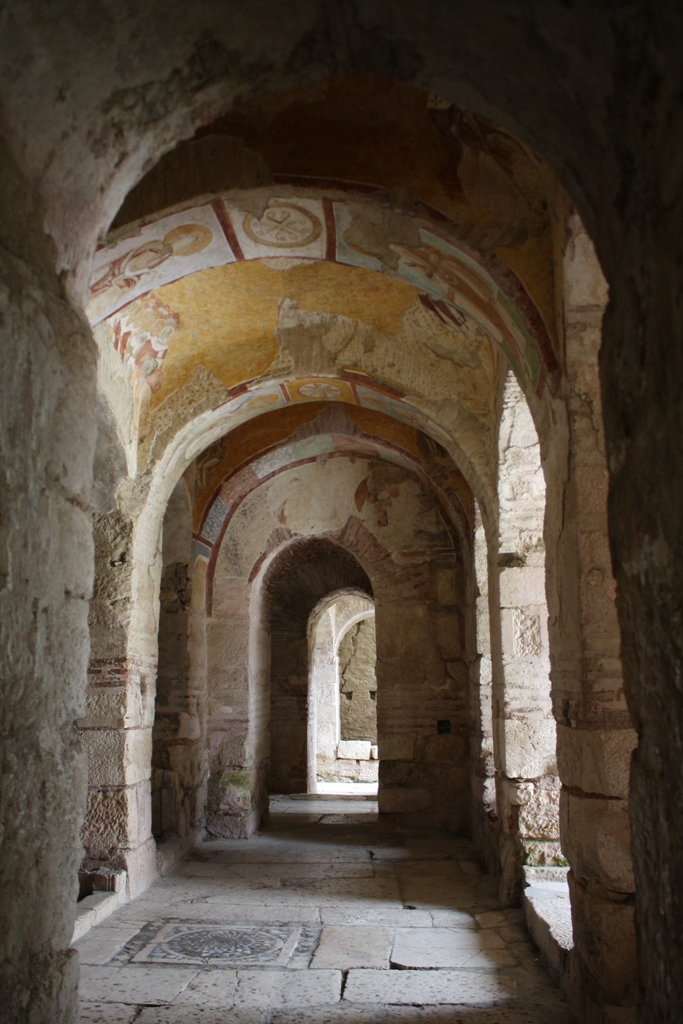
St Nicholas Church 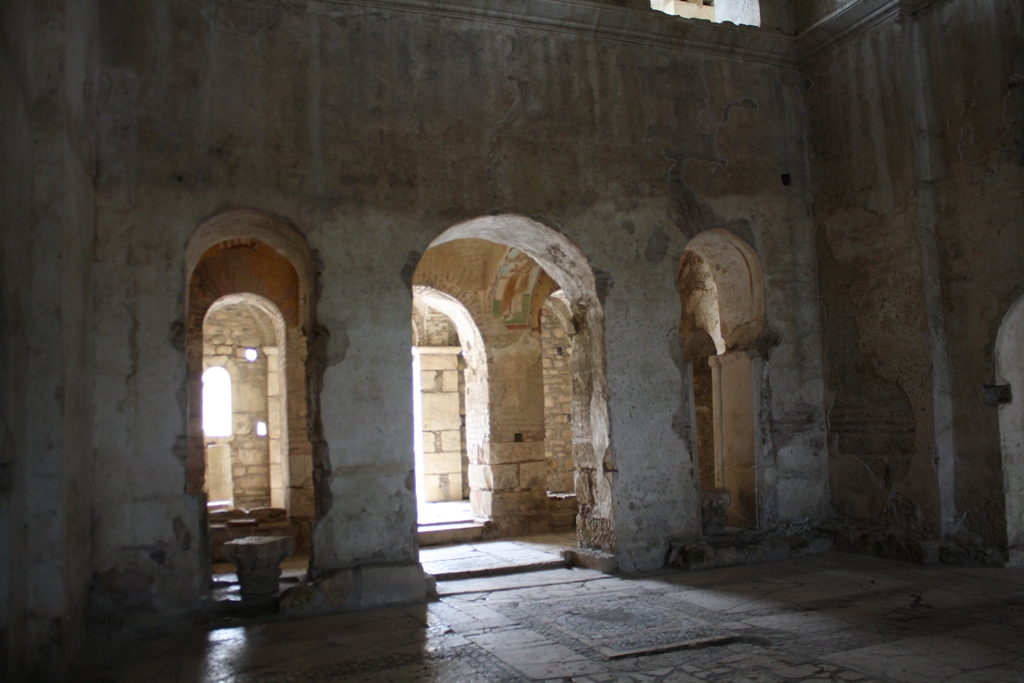
Some very recent excavations and discoveries to be found in Patara
Mission Abora
After a journey across the sea from Bulgaria, Abora IV arrived in Kas harbour in the Autumn of 2019. This reed boat ( a reconstruction of an original) was presented as a gift to the Turkish Ministry of culture, who decided that the best place for this boat to be exhibited for the general public to see would be the old city of Patara. After its long journey by sea followed by a road journey from Kas to Patara, it can now be seen in the Agora area infront of the Lycian Assembly hall (Bouloutrion) This is a perfect example of the type of reed boat that would have sailed across the Black sea and through the windy Aegean to target the ancient trading ports in the Eastern Mediterranean (Patara being one such port). Patara had a huge harbour and became the most important port on the Asia Minor coast during the Roman times, which mediated the grain trade from the Nile Valley. The Granary still stands on the far side of the harbour. Further information about this boat and the people who built her can be found on their Facebook page under mission Abora or through this link http://www.ancientorigins.net/news-history-archaeology/reed-boat-0012385
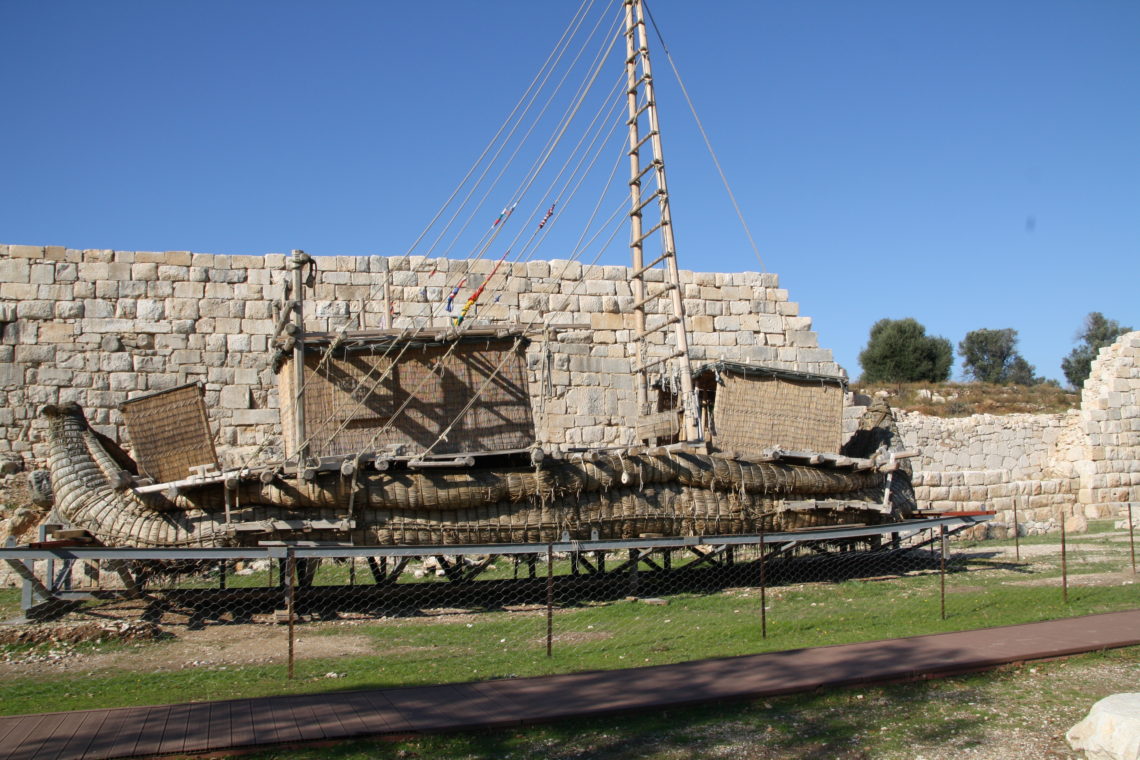
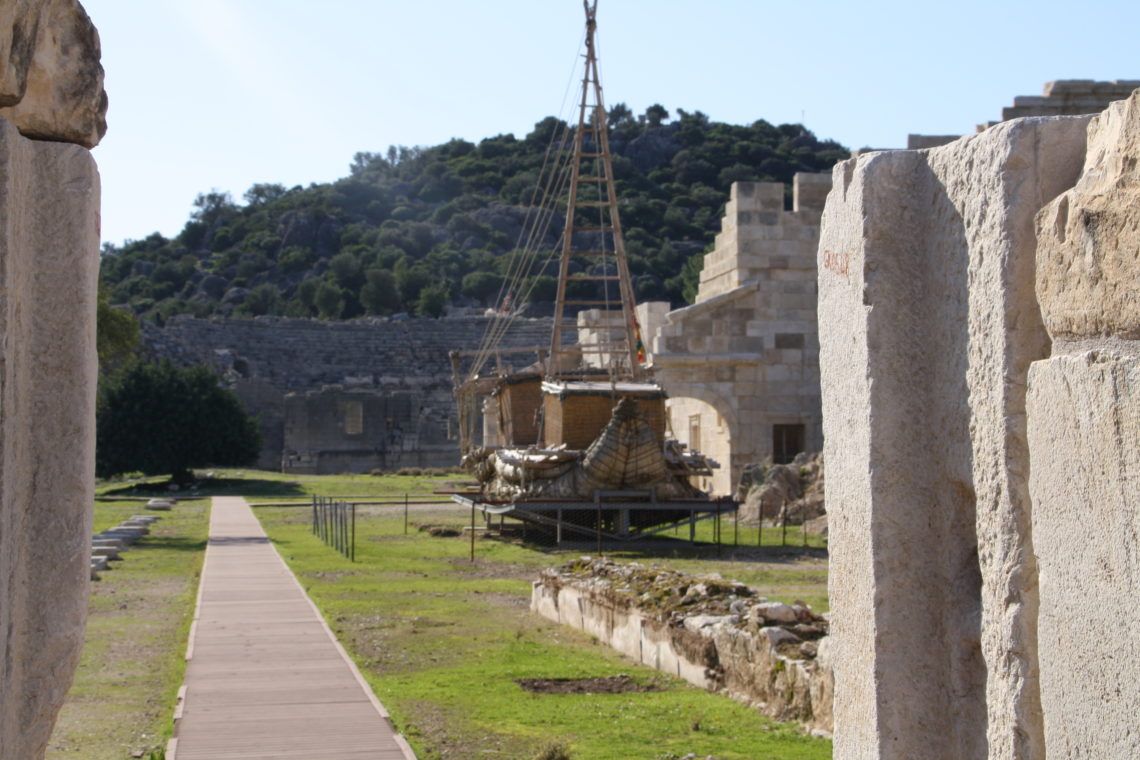
The first radio telegraph system of the Ottoman Empire
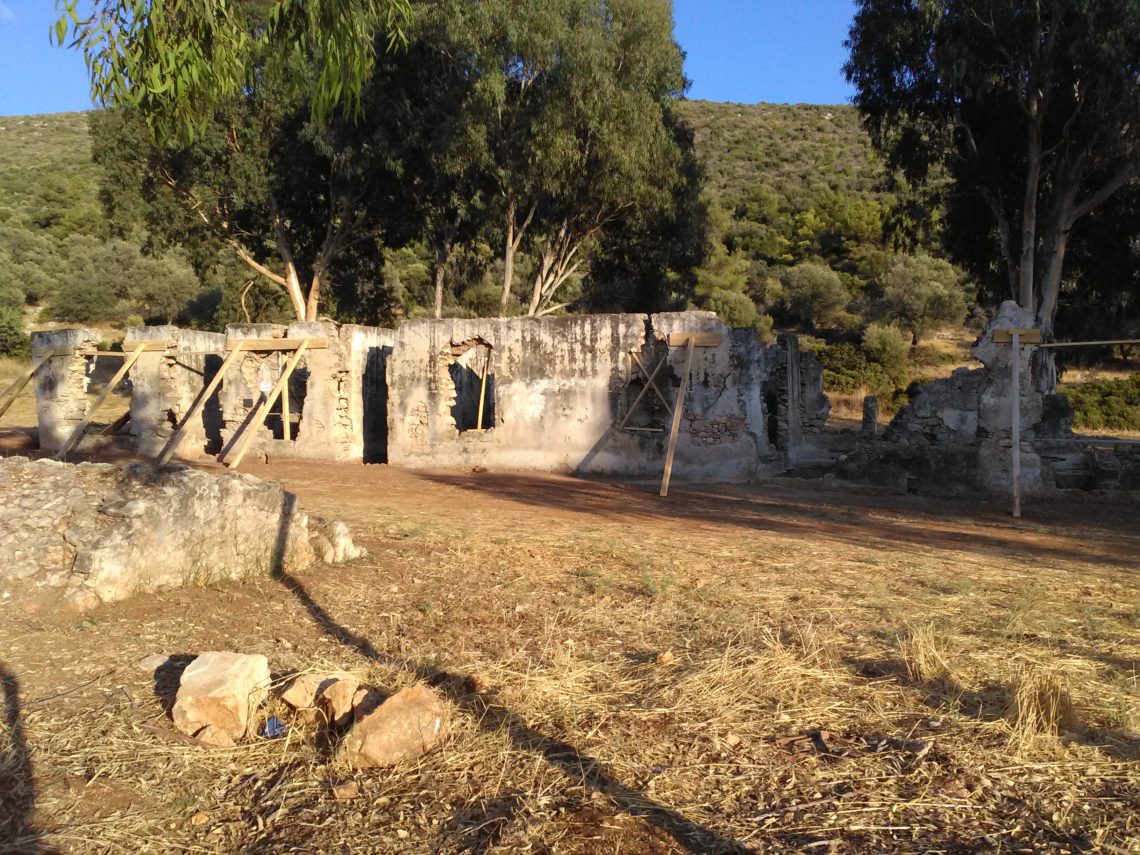
In the summer of 2019 the excavation team at the Patara archaeological site completed excavating more recent historical evidence. Very close to the beach carpark, on the left hand side is the site of an Ottoman radio telegraph station, the first radio telegraph station of the Ottoman Empire. The station was founded in 1904 and was opened on the 31st August 1906.
Through this station communication was established between the Ottoman land Trablusgarp (Tripoli) with Demre (Derna city Lybia) radio station. It was also used for communicating with passenger and transport vessels travelling the Mediterranean sea. It was bombed and destroyed in 1911 by the Italian navy when they declared war on the Ottoman Empire and the bombed out shells of the buildings is all that remains.
Work is ongoing in Patara under Professor Dr Havva Iskan Isik along with students from the Department of Archaeology , Faculty of Arts and Science at Akdeniz University, Antalya. They are doing amazing work and each year new discoveries are made. Patara is a site to be visited again and again.We have just given information about the main discoveries in Patara. However hours, even days, can be spent exploring this vast site. What makes the place so special is its setting. Surrounded by nature, farmers continue to farm on the land amongst the ruins of a once vast city and you will come across cows, goats and sheep, grazing between the ancient stones. A truly magical place.
Getting here:
From Kalkan: It is a 15 minute drive from Kalkan to Patara. There is ample free parking at the site. Drive along the D400 in the direction of Fethiye and turn left off the D400 when you seen the large brown sign indicating PATARA. The site is approximately 5 minutes drive from the main road.
If you are travelling by bus. You can take a bus that is coming directly from Kalkan to Patara beach and disembark from the bus at the entrance to the site. Out of season you will need to take the bus that is going from Kalkan to Fethiye and disembark at the junction where the main road meets the the smaller road going into Gelemis. From here you can take a taxi to the site or walk.
From Kas. It is a 45 minute drive from Kas to Patara. There is ample free parking. Drive along the D400 in the direction of Fethiye and when you see the large brown sign indicating PATARA, turn left. The site is approximately 5 minutes drive from the main road. If you travel by bus then you can either take a bus that is going directly from Kas bus station to the beach or a bus that is going from Kas into the village of Gelemis. If you take the bus going into the village of Gelemis, you can then either walk to the site from the village or take a mini bus from the village going to the beach and get off the bus once you reach the archaeological site site.
From Fethiye: It is approximately 1 hour drive from Fethiye to Patara. Take the D400 travelling in the direction of Kas. When you see the large brown sign indicating PATARA, turn right. It is about 5 minutes drive from the main road to the ancient site. If you travel by bus then you need to take a bus travelling from Fethiye to Kalkan or Kas and disembark at the junction where the main road meets the smaller road travelling into Gelemis. From this junction take a taxi or a bus.
Ticket purchase:
You will need to purchase a ticket at the barrier as you enter the archaeological site. The ticket to explore the site is different to the beach pass that can be purchased if you are just wanting to travel through the site to get to the beach. Currently the price to visit the archaeological site is 25 TL but this is subject to change at short notice. For Turkish citizens or those who have a residency permit, it is possible to purchase a museum pass that will allow you multiple entry into many archaeological sites and museums throughout Turkey, including Patara.
